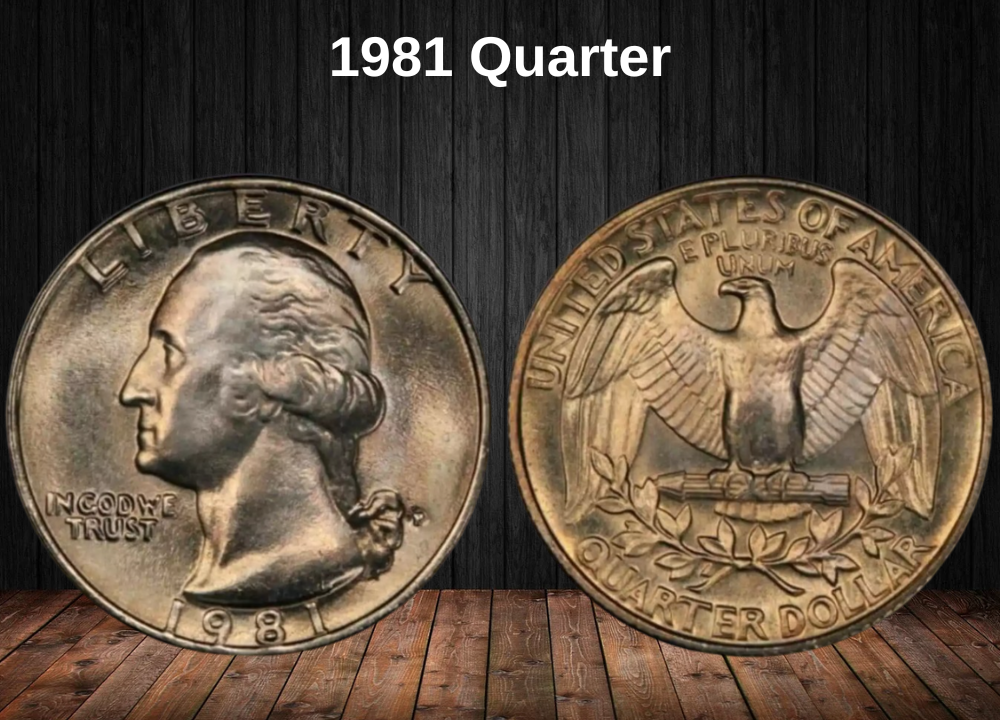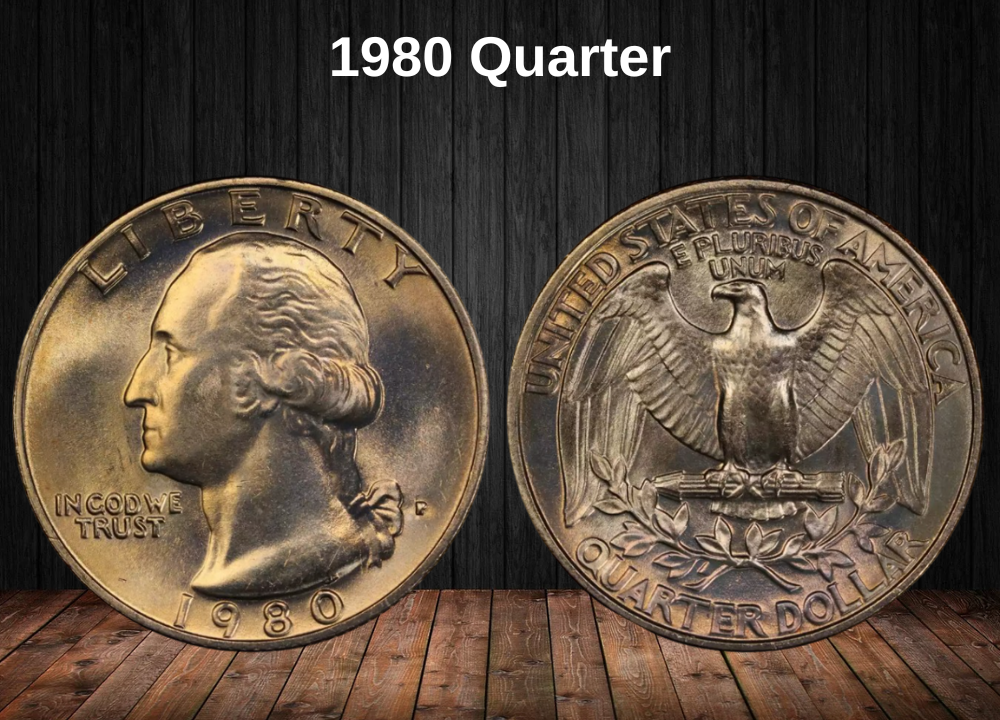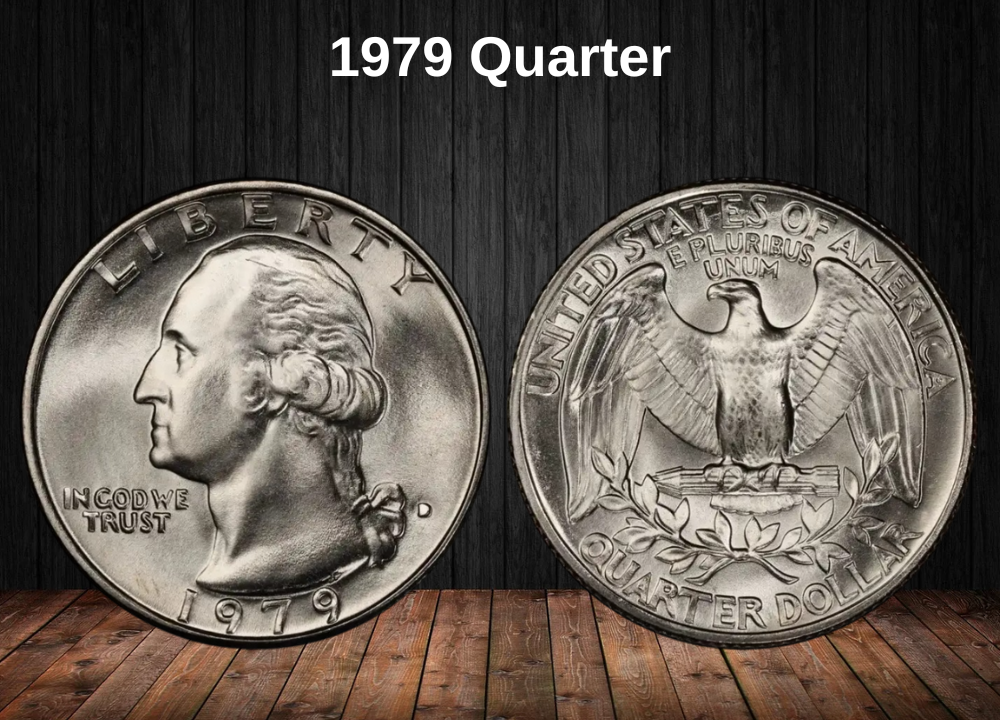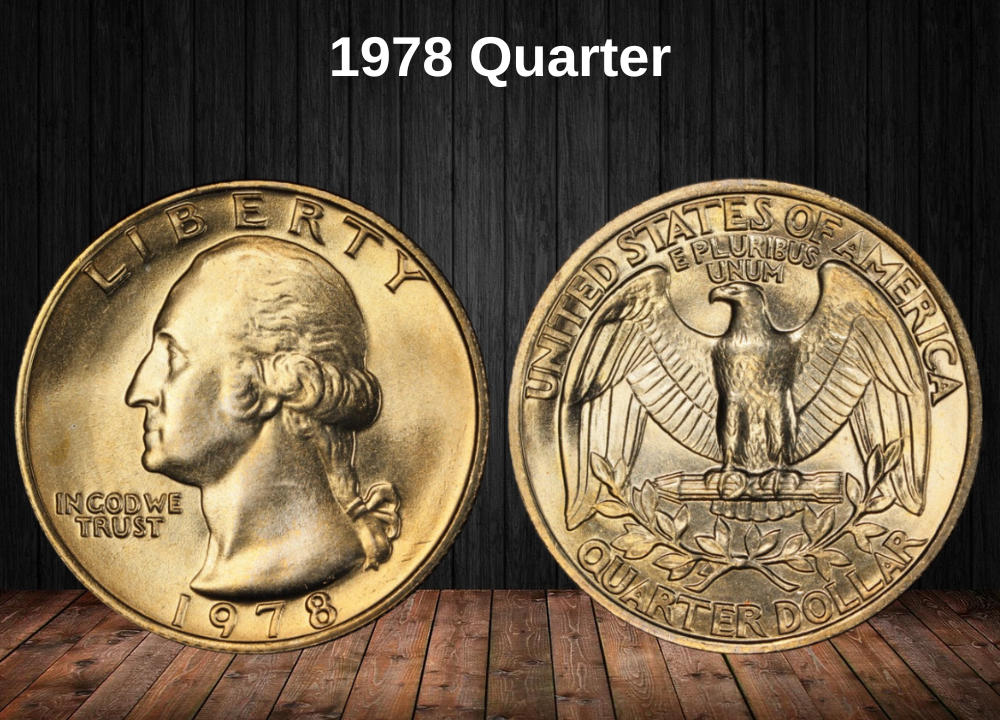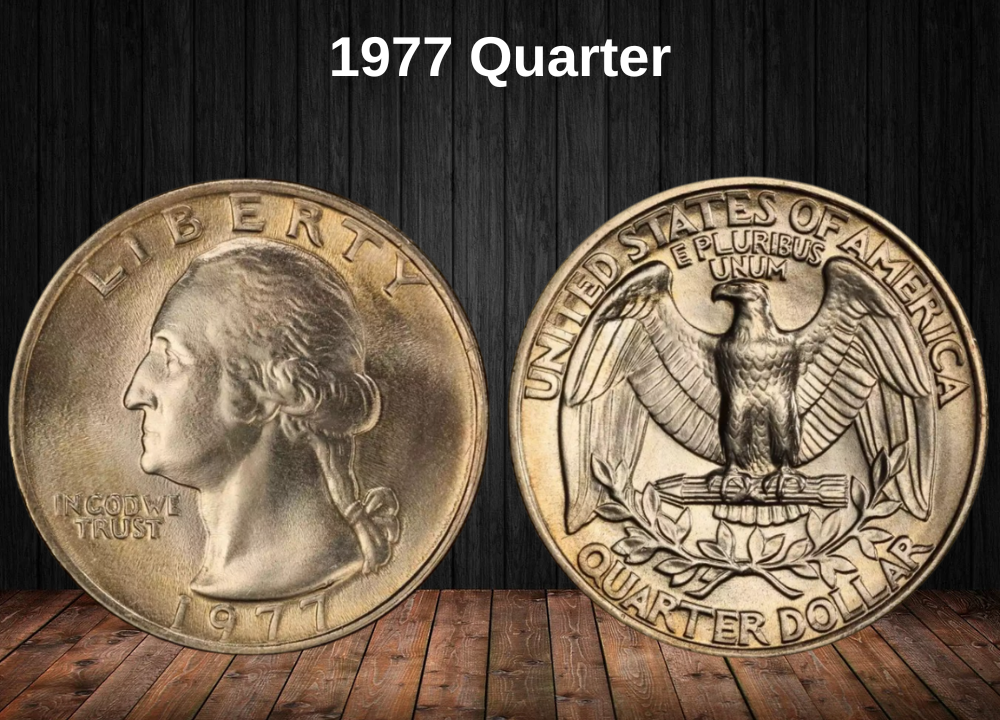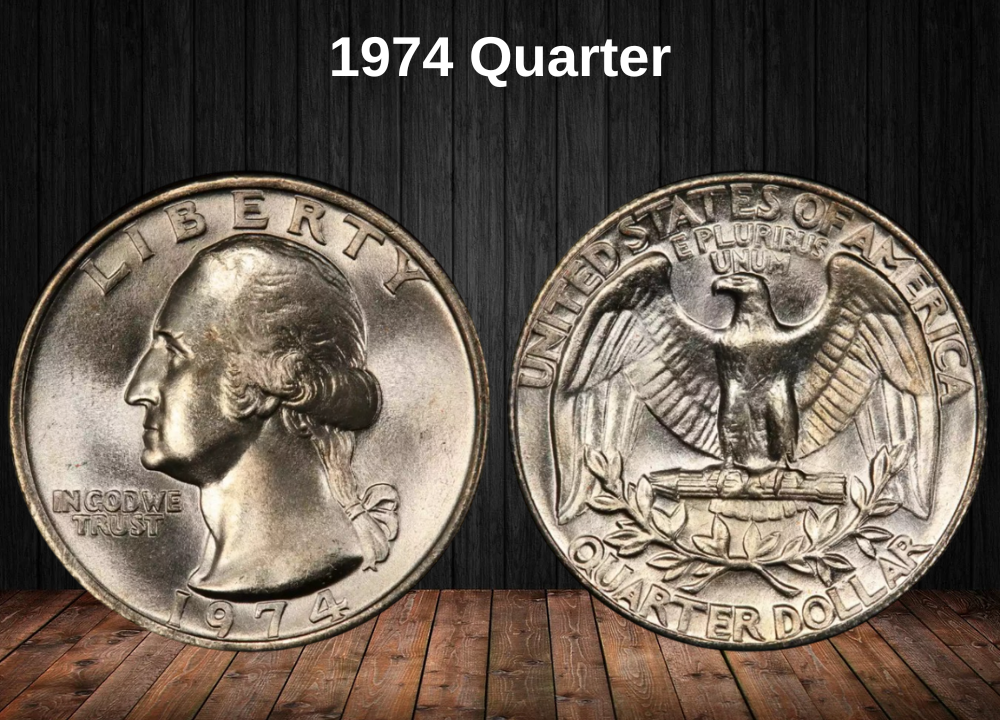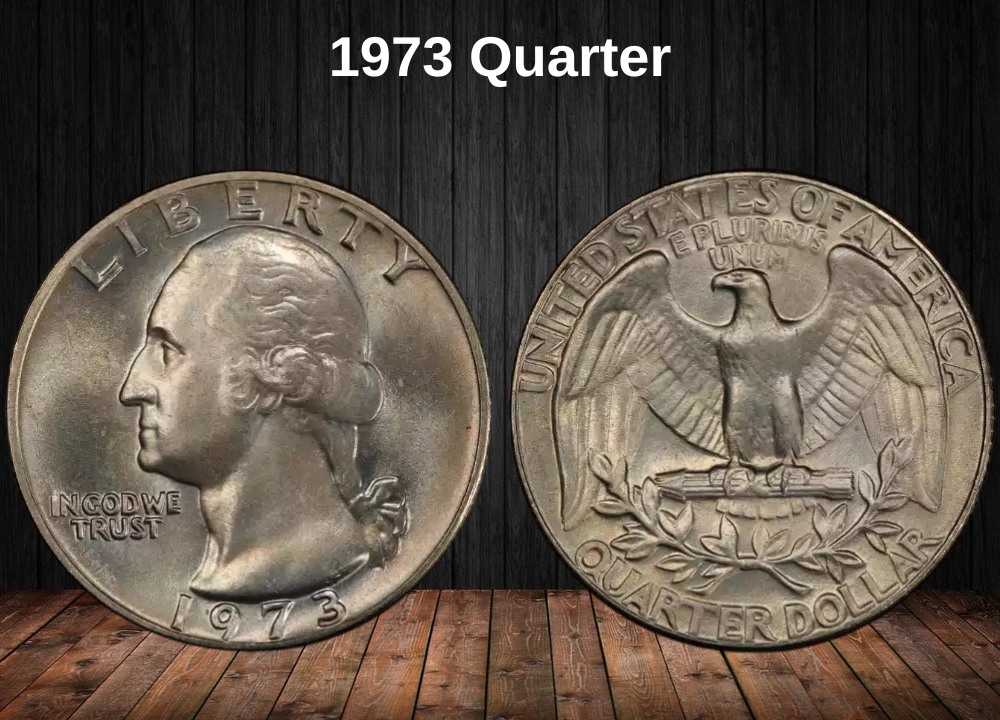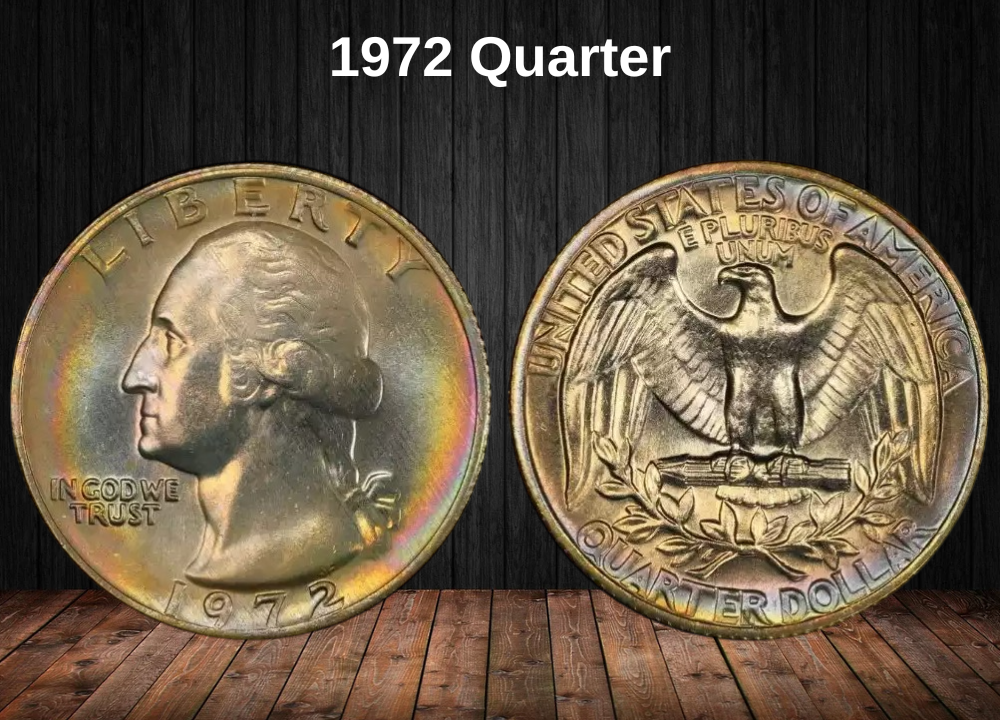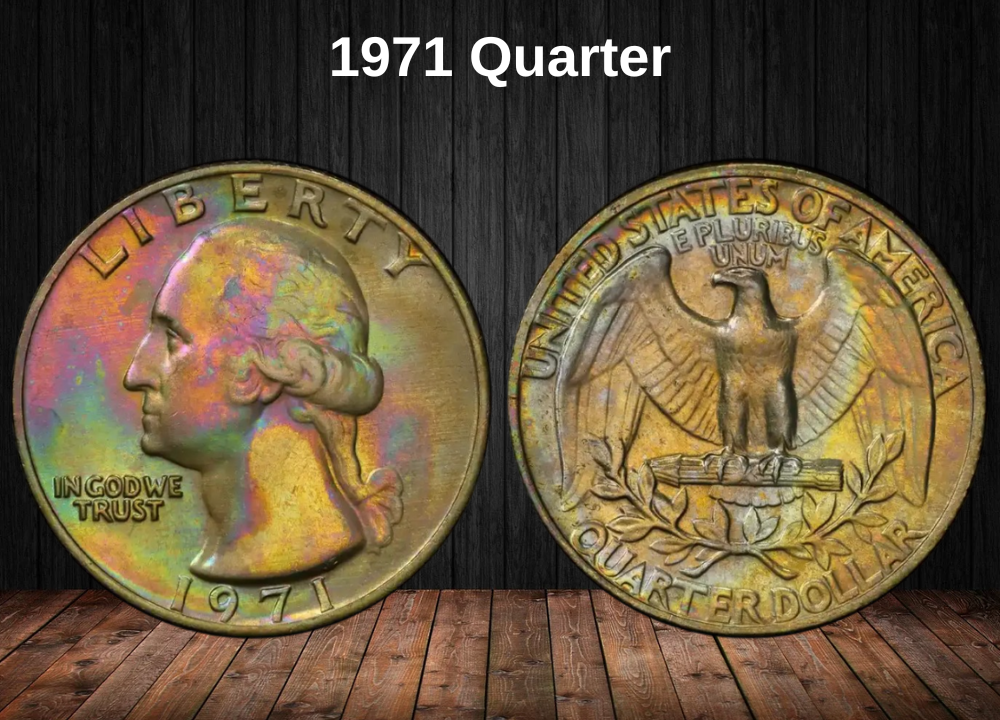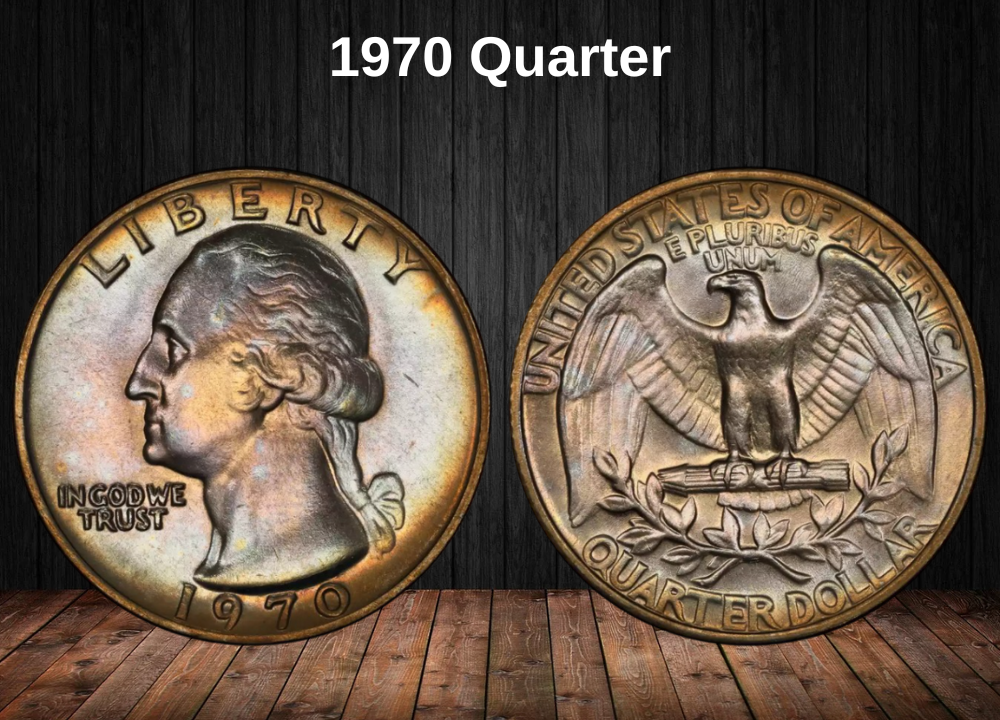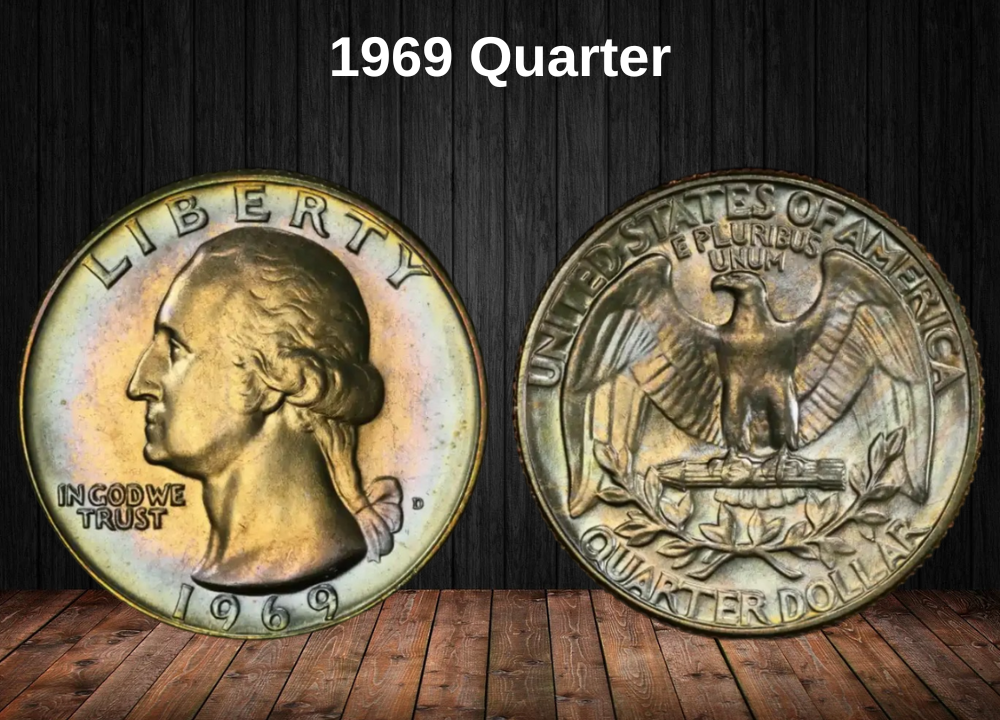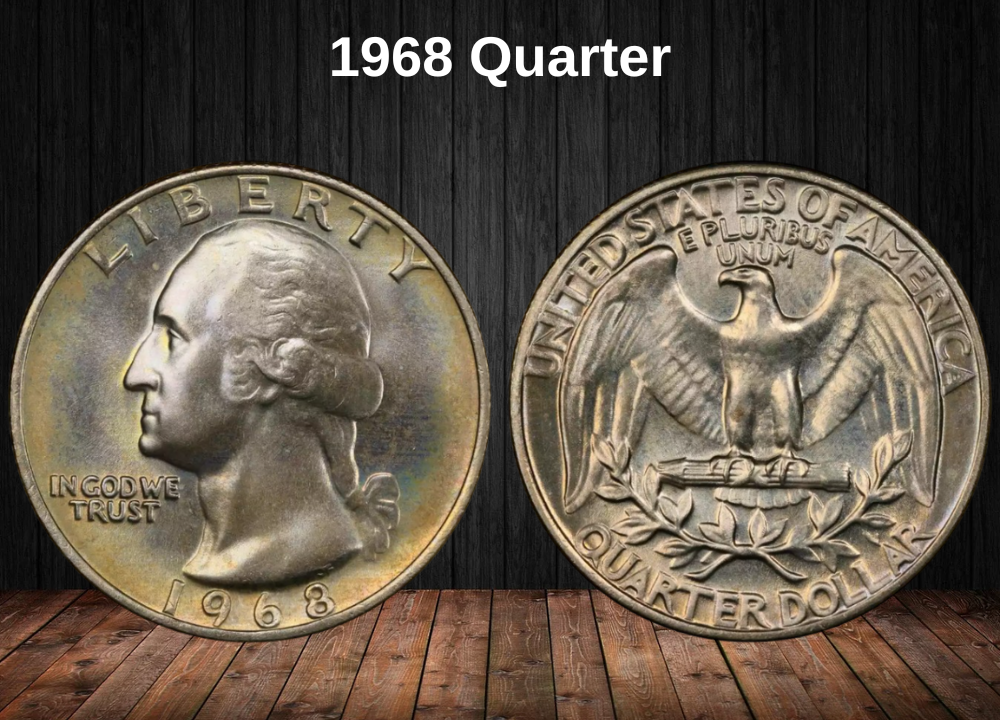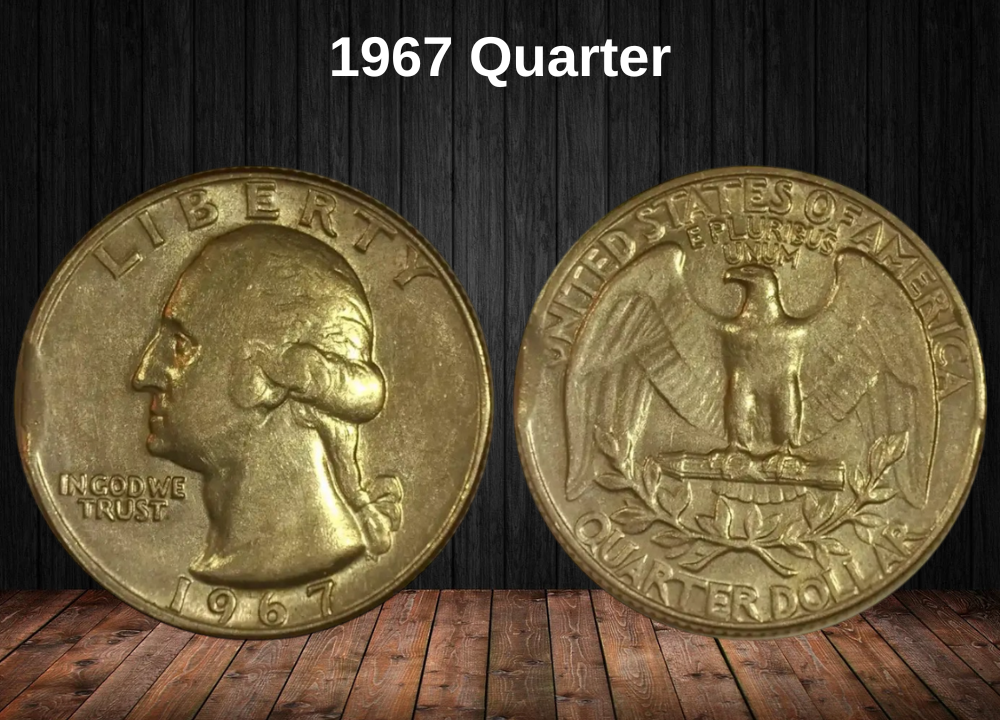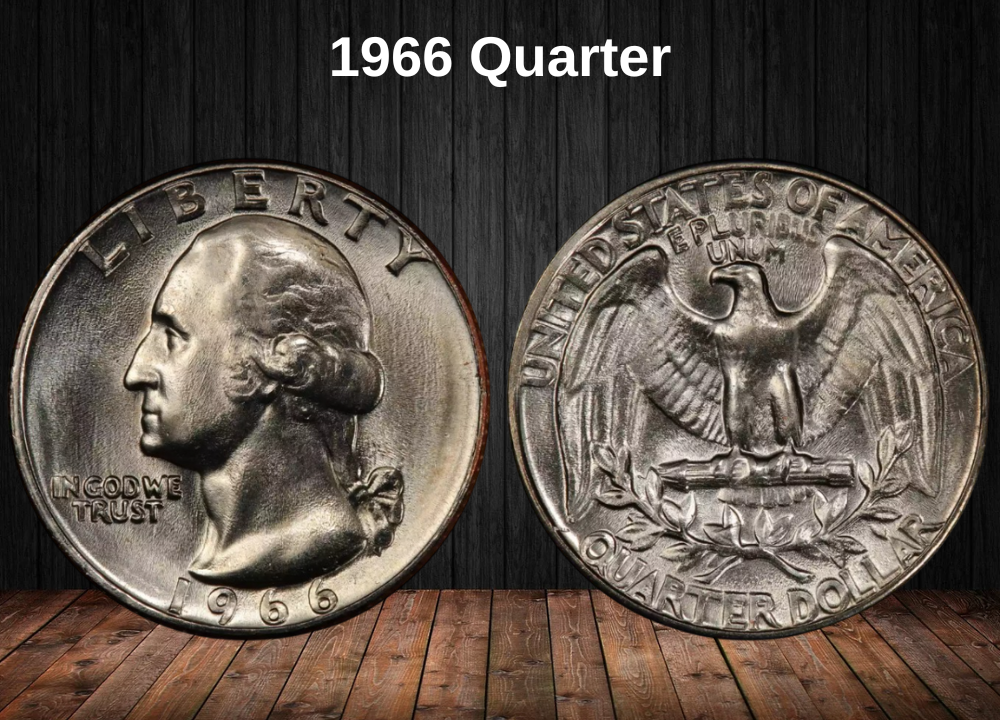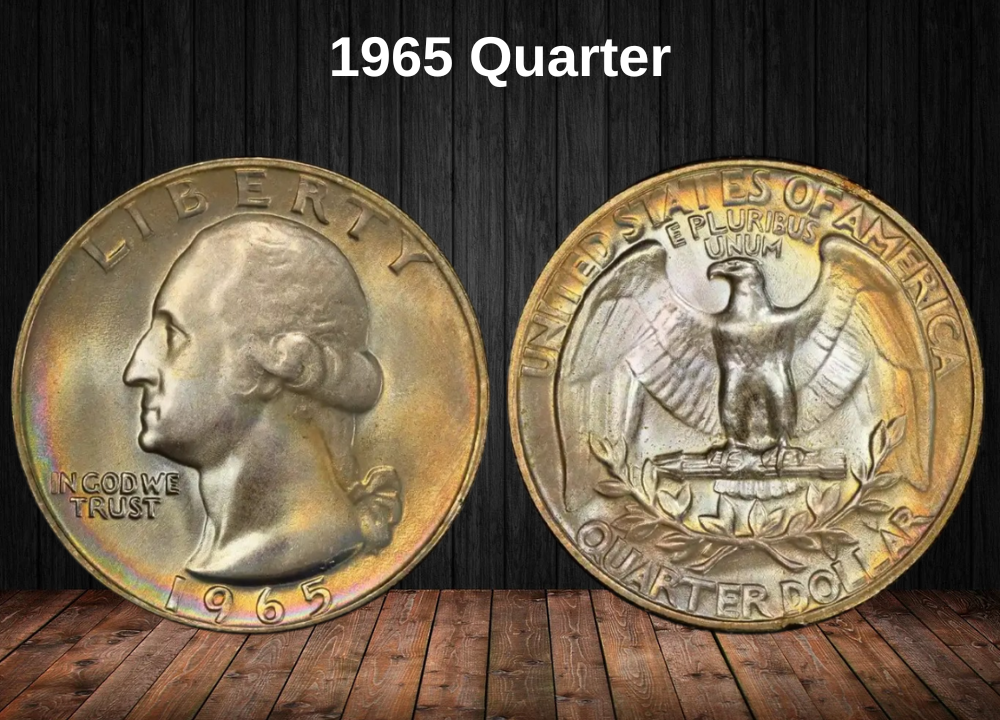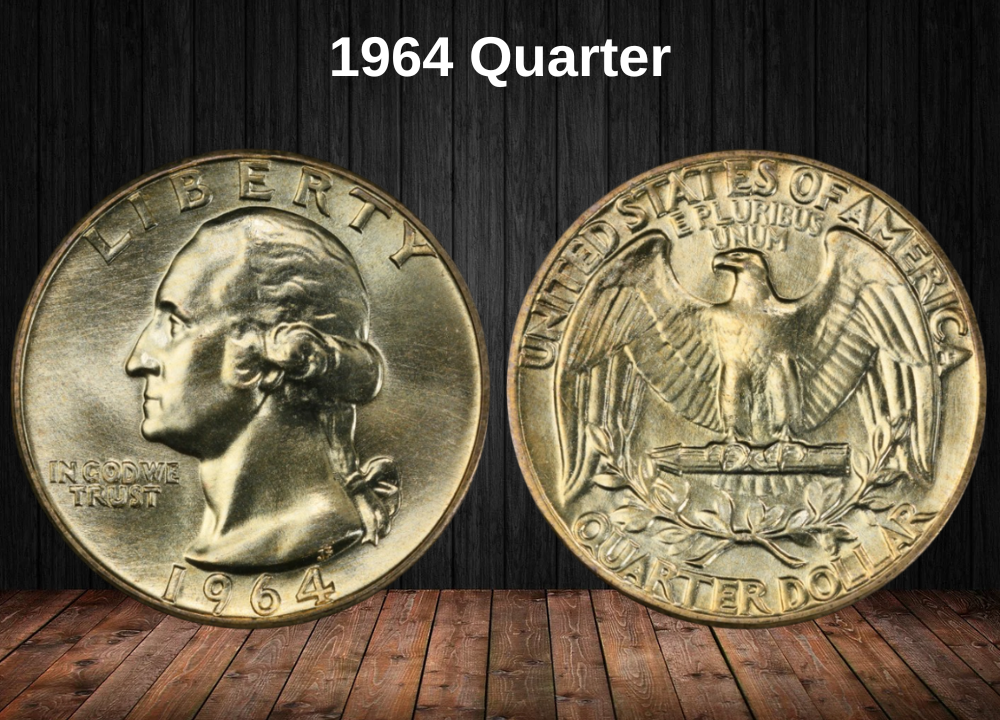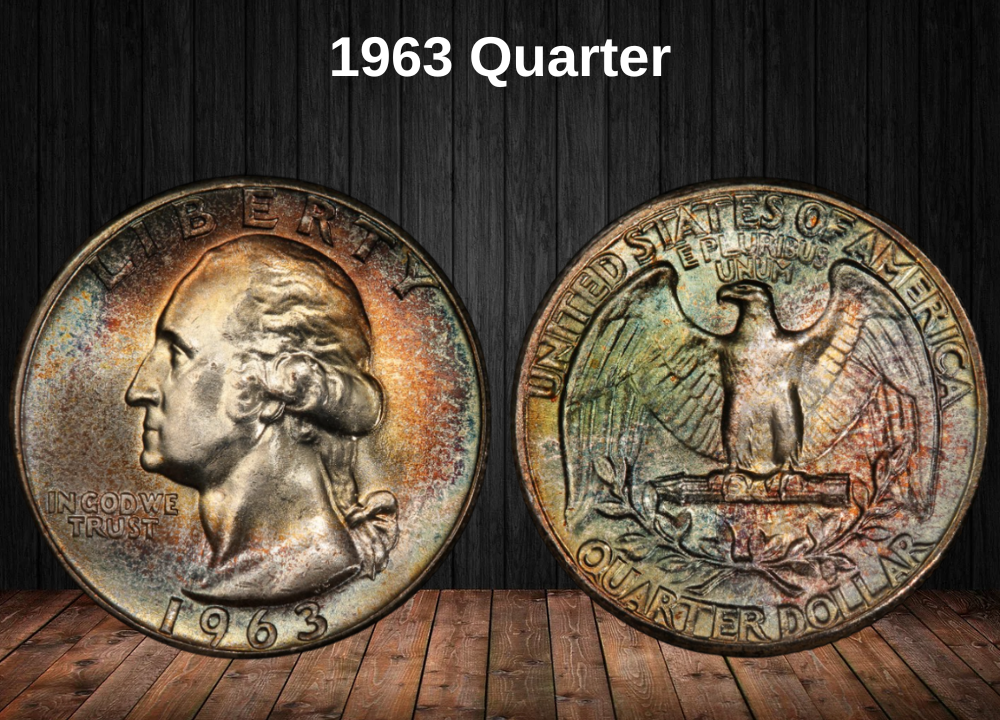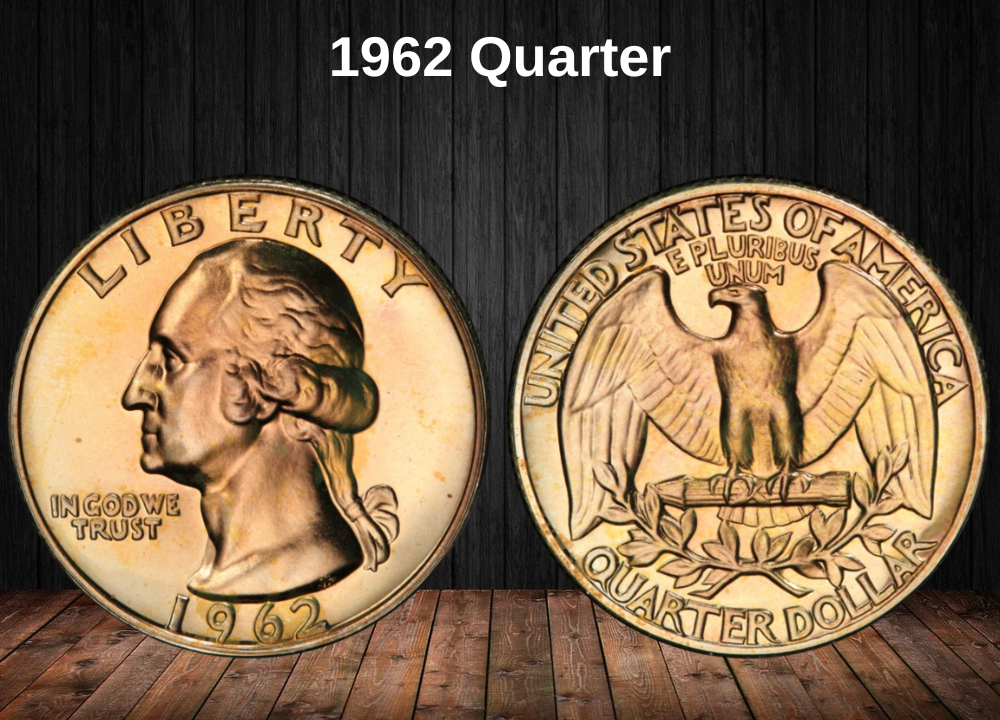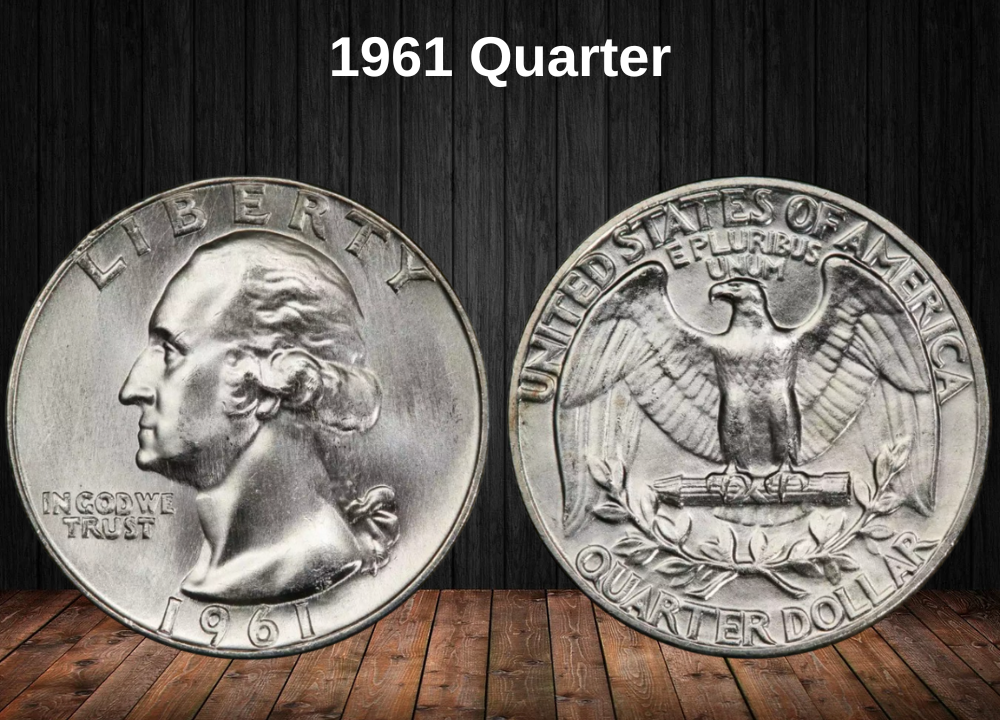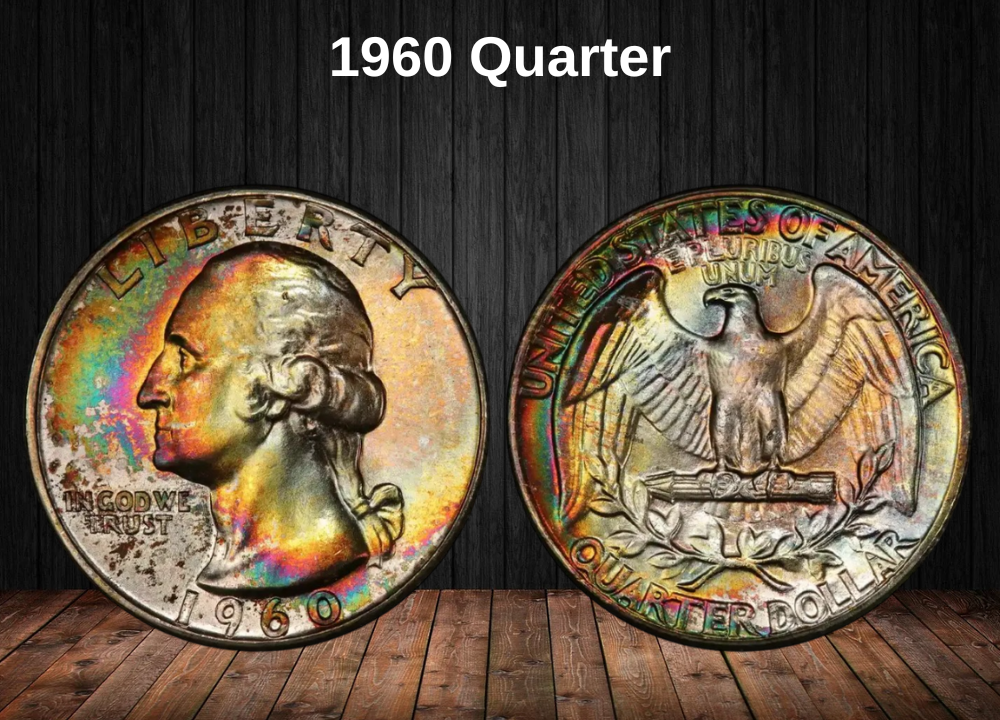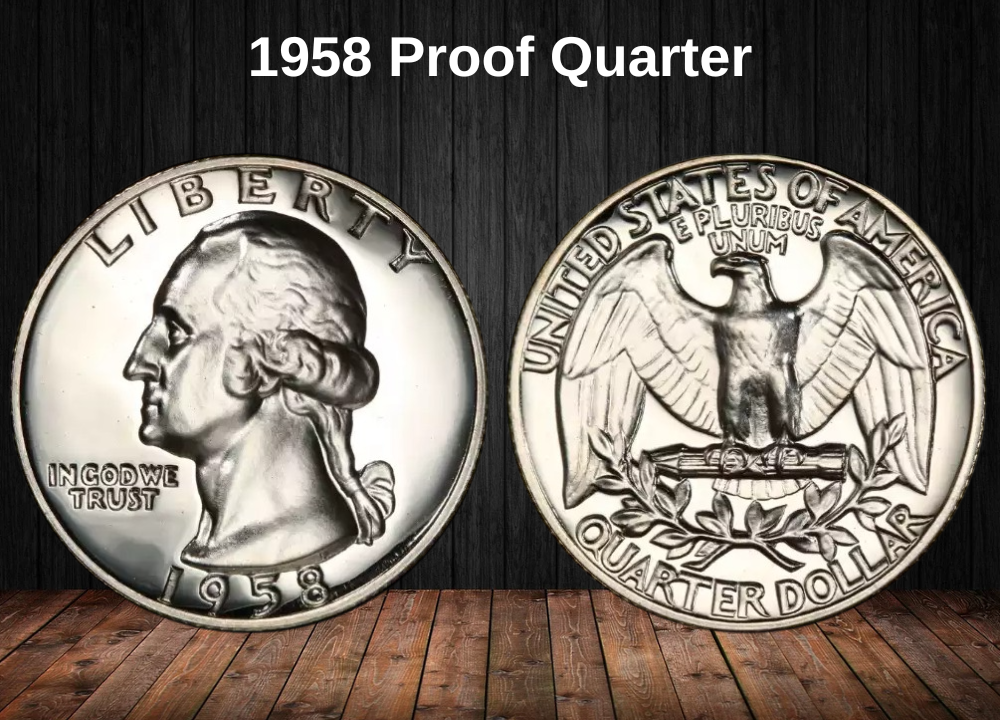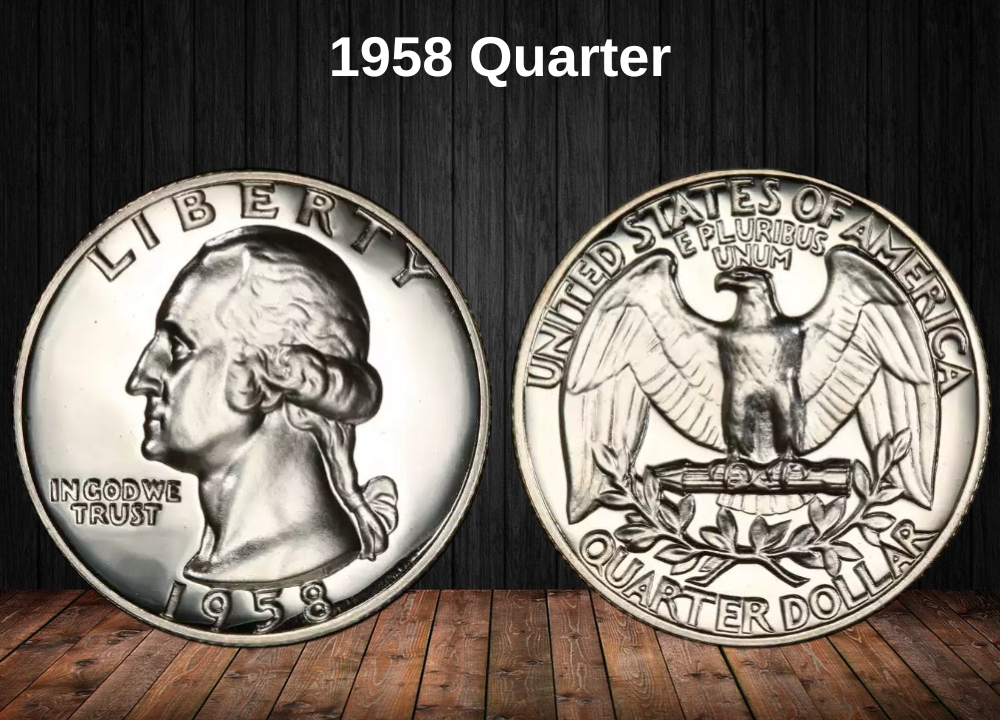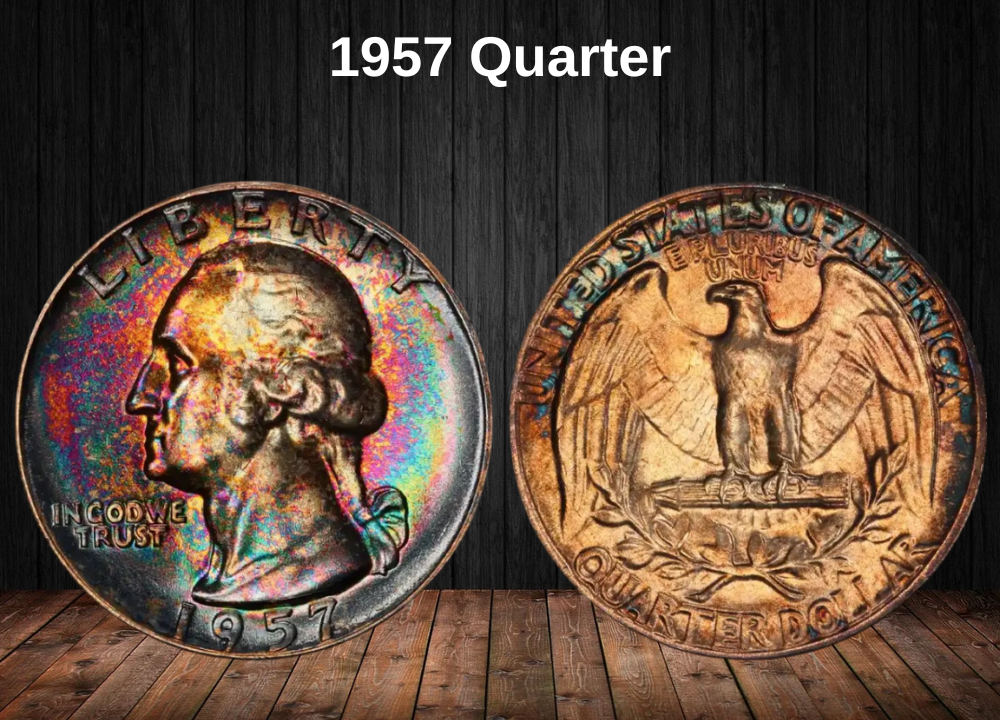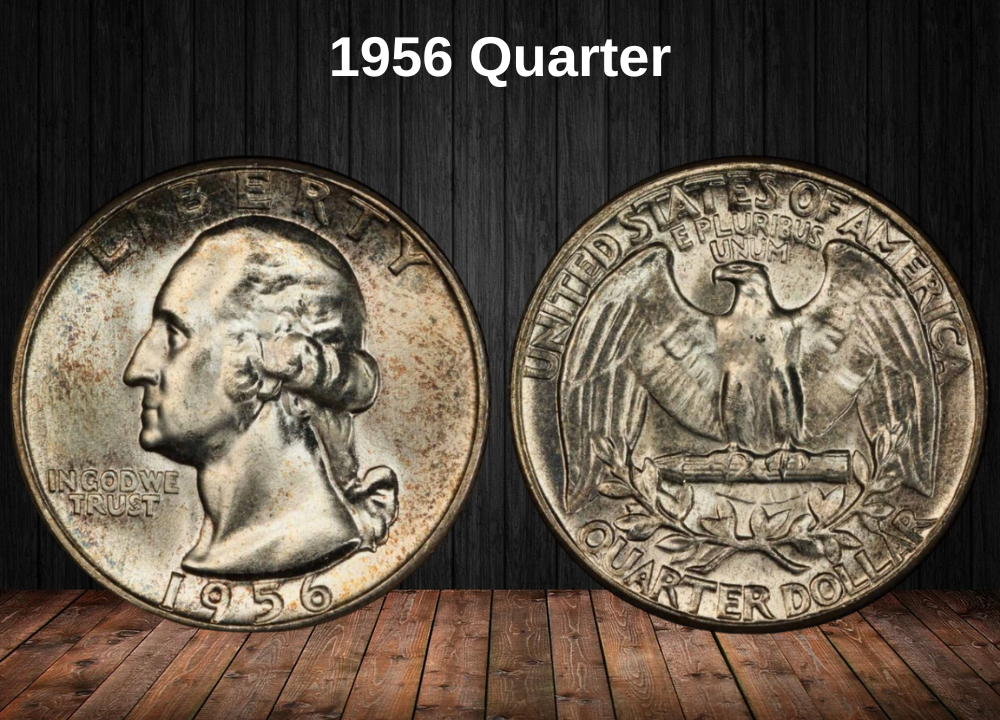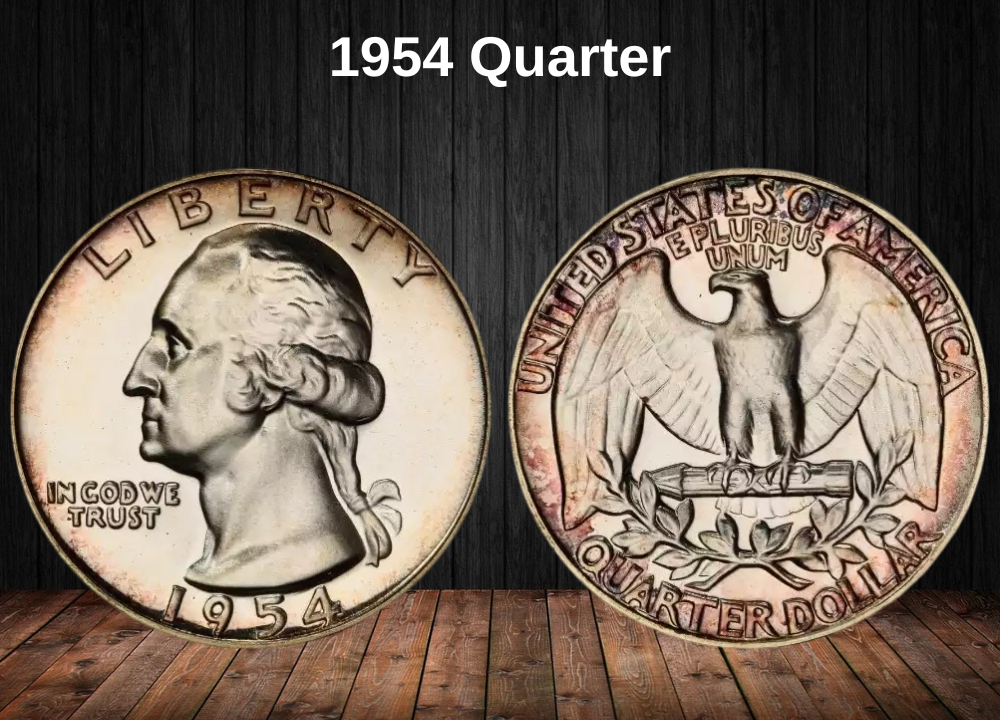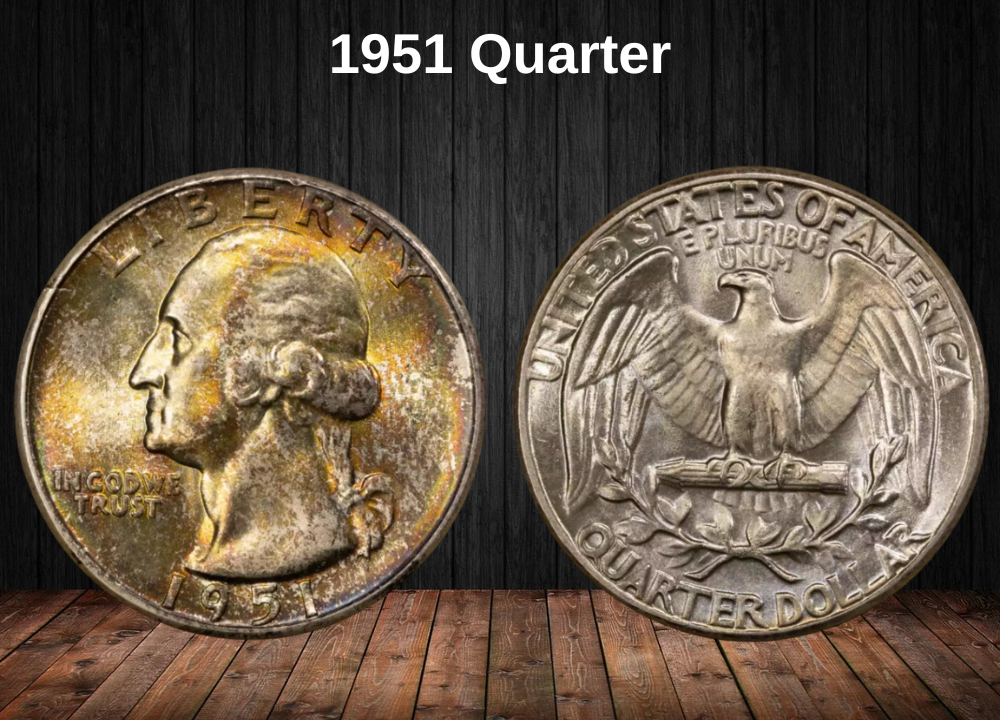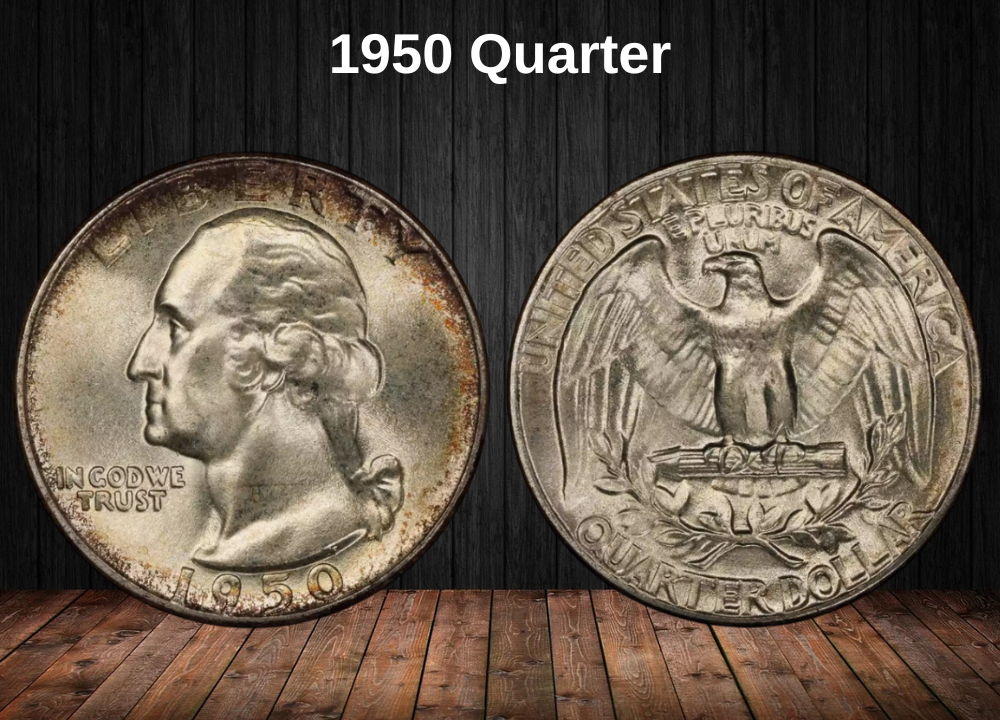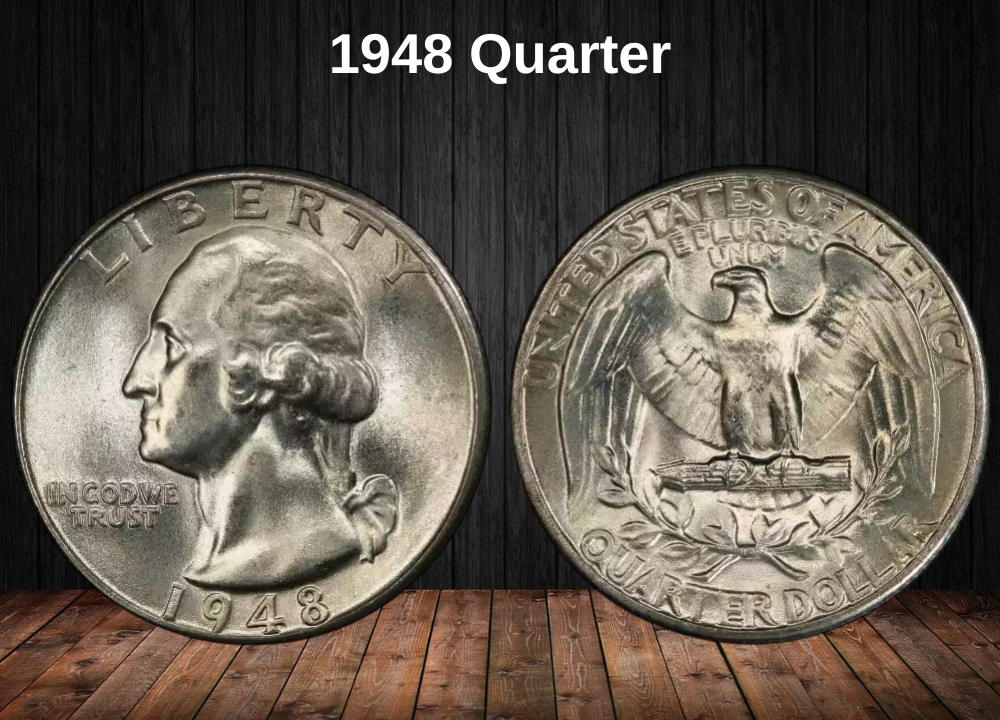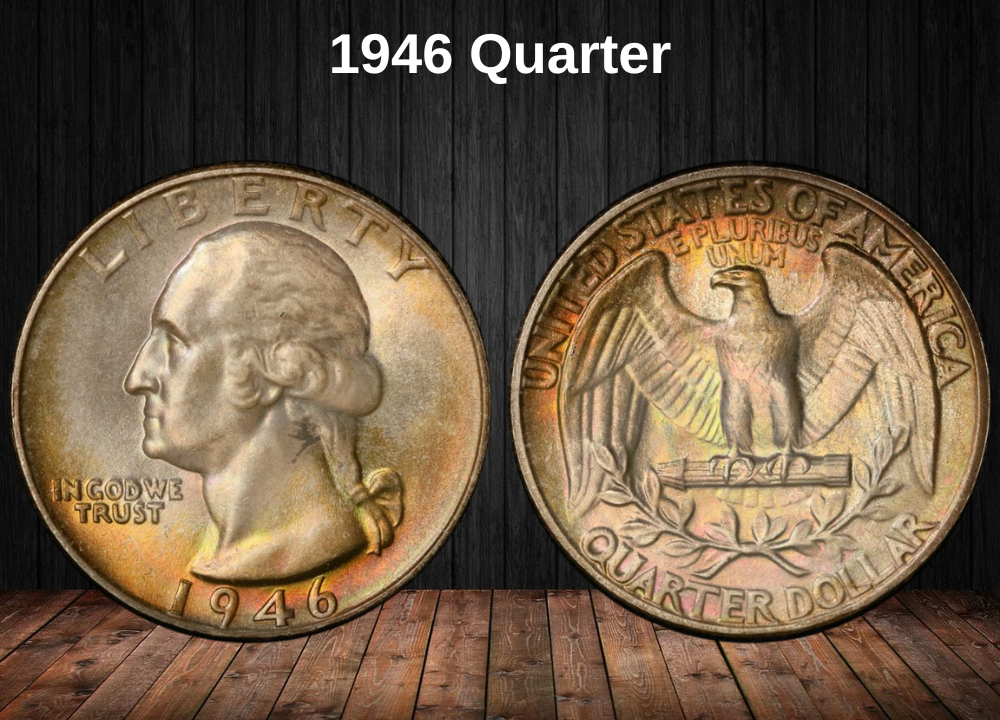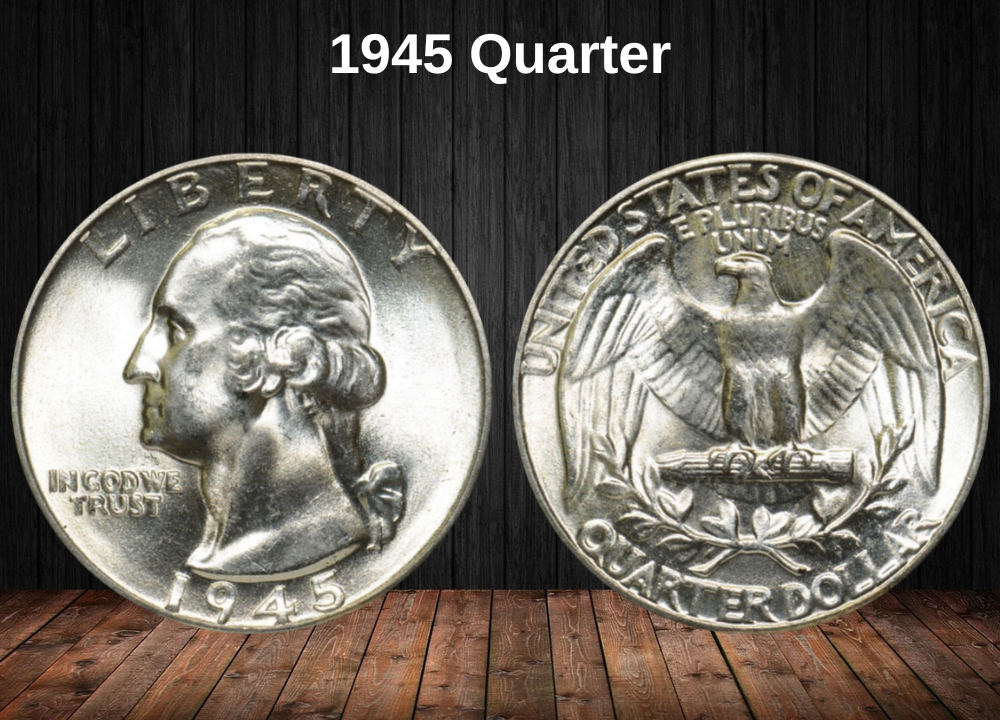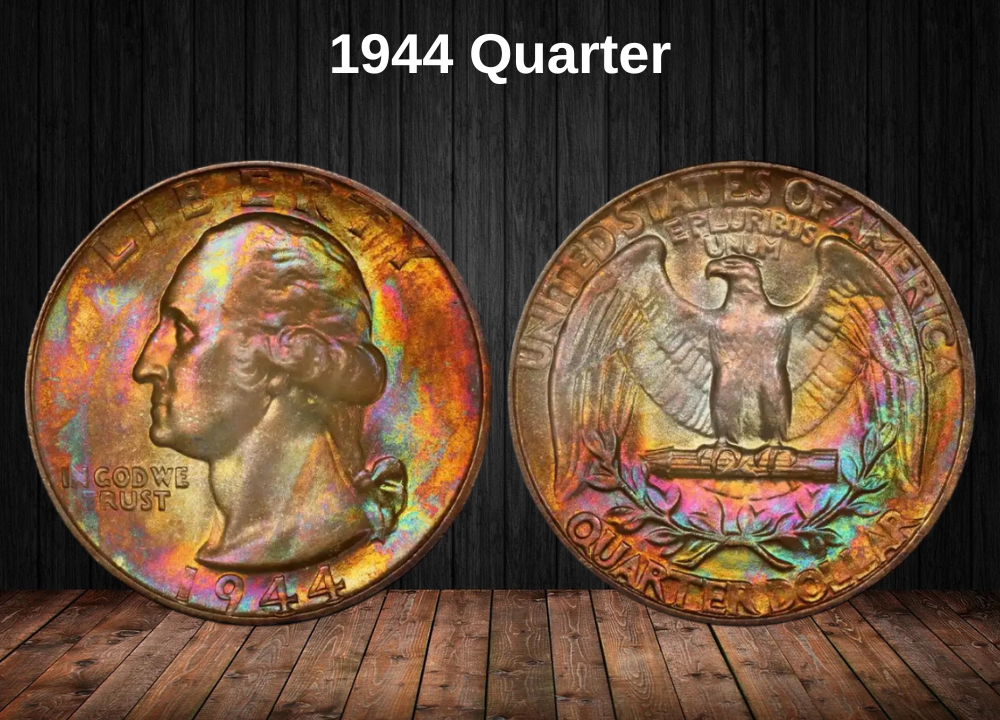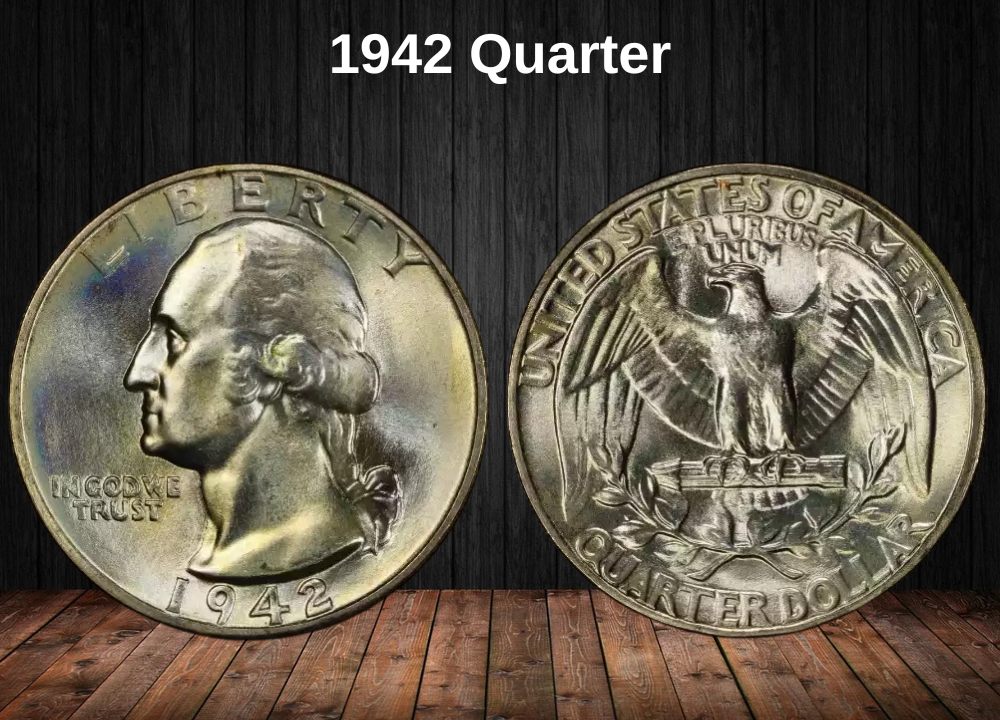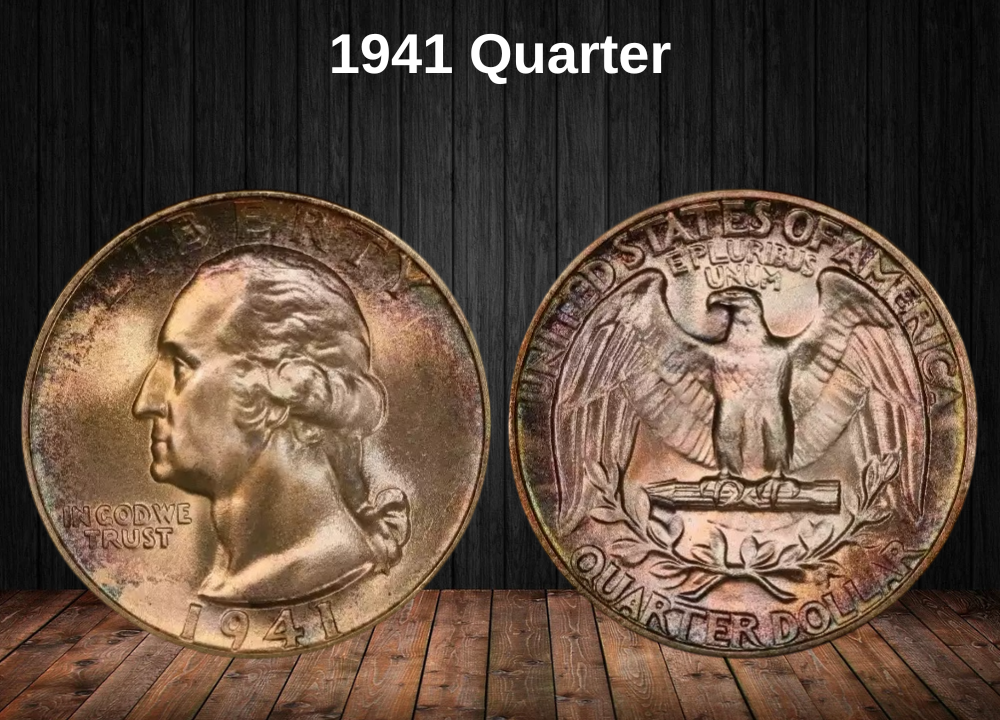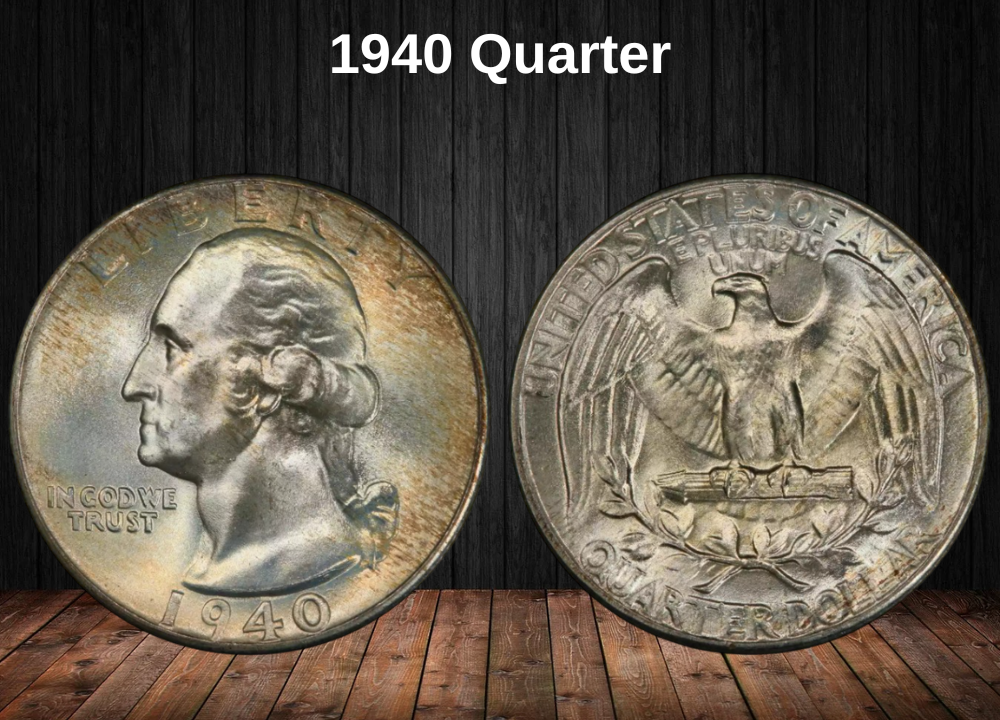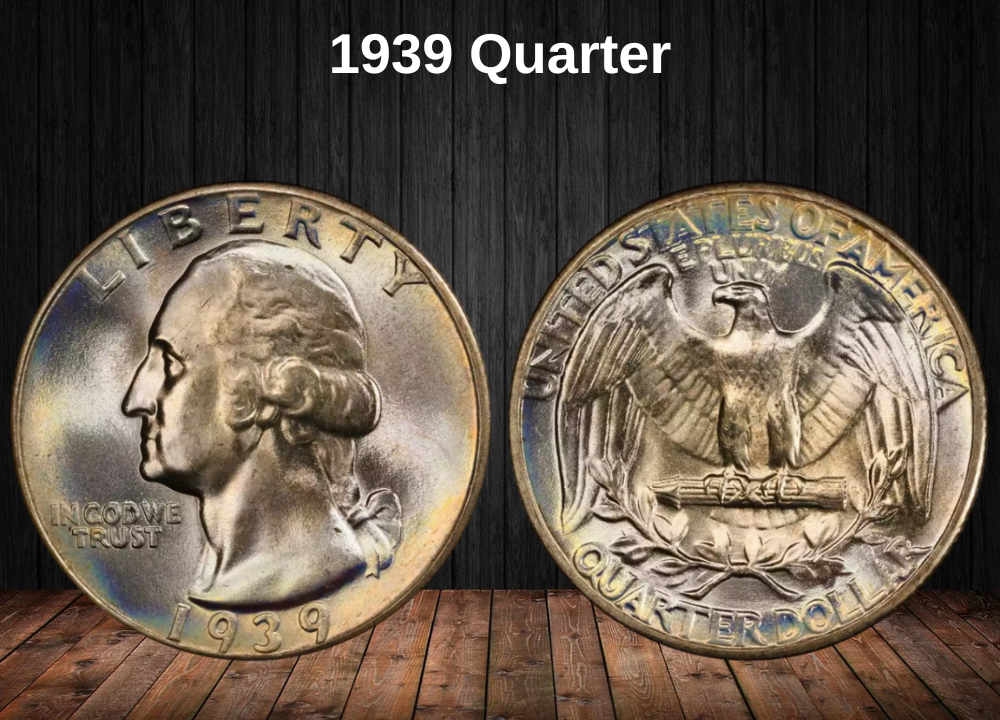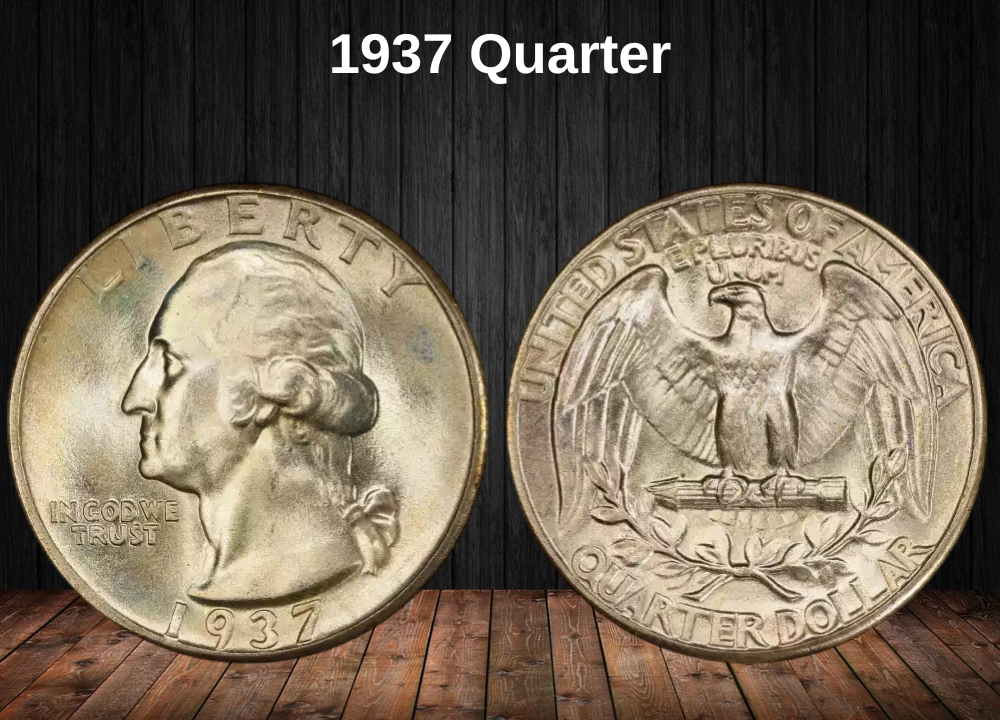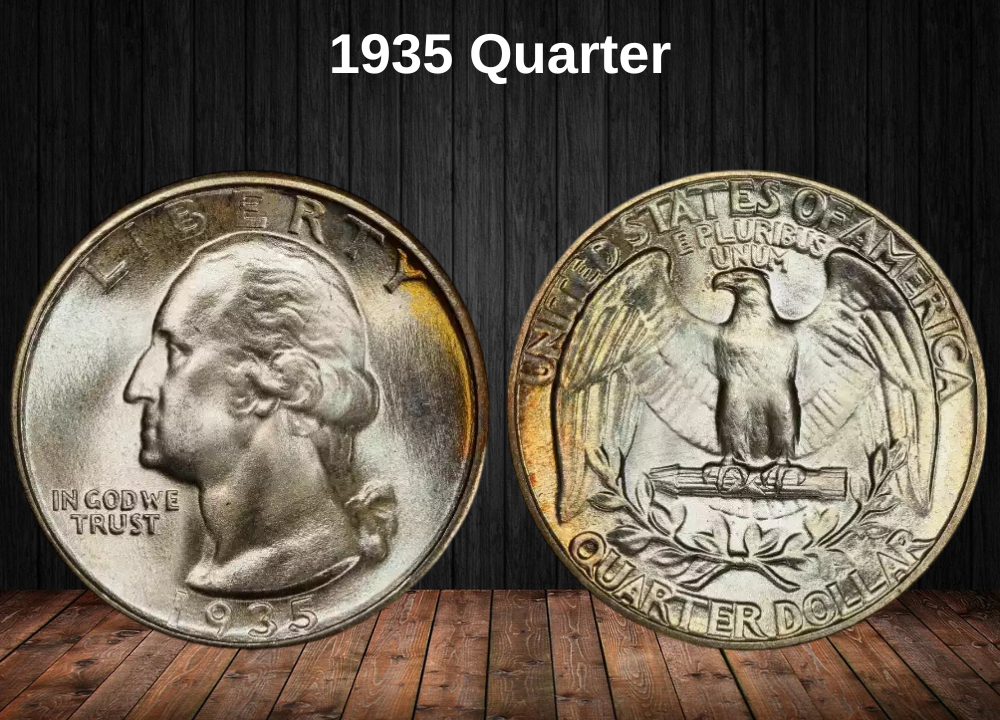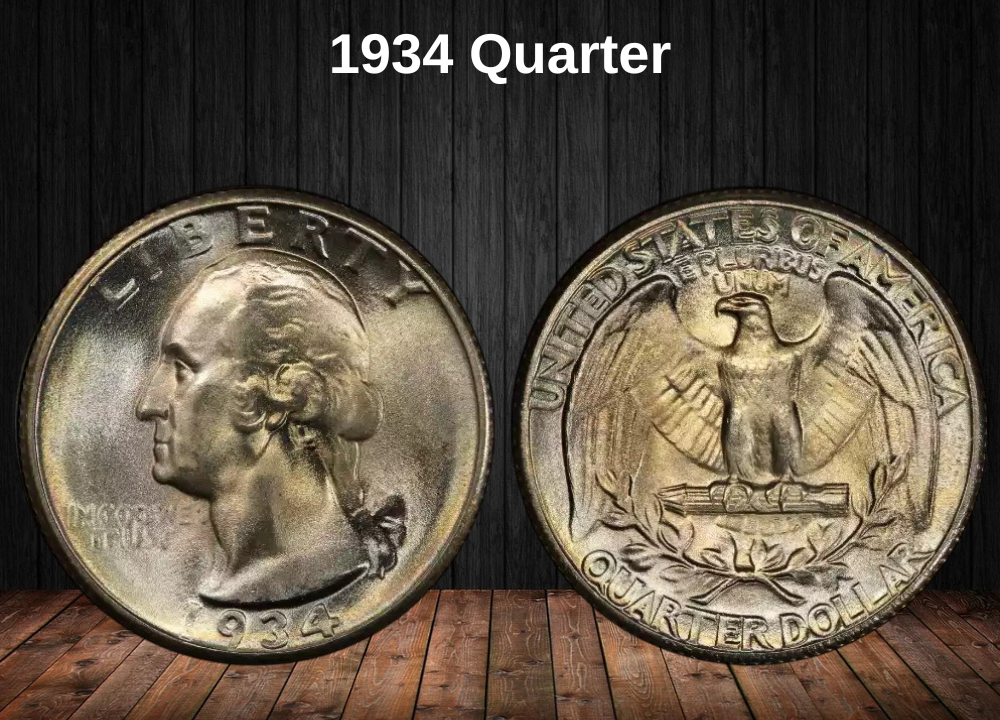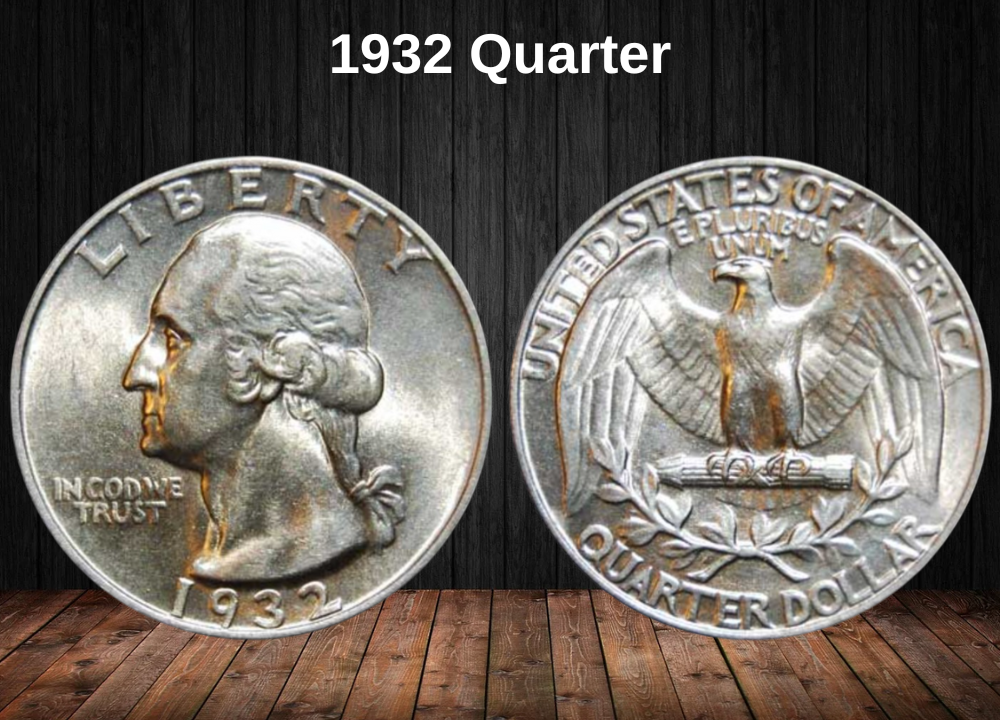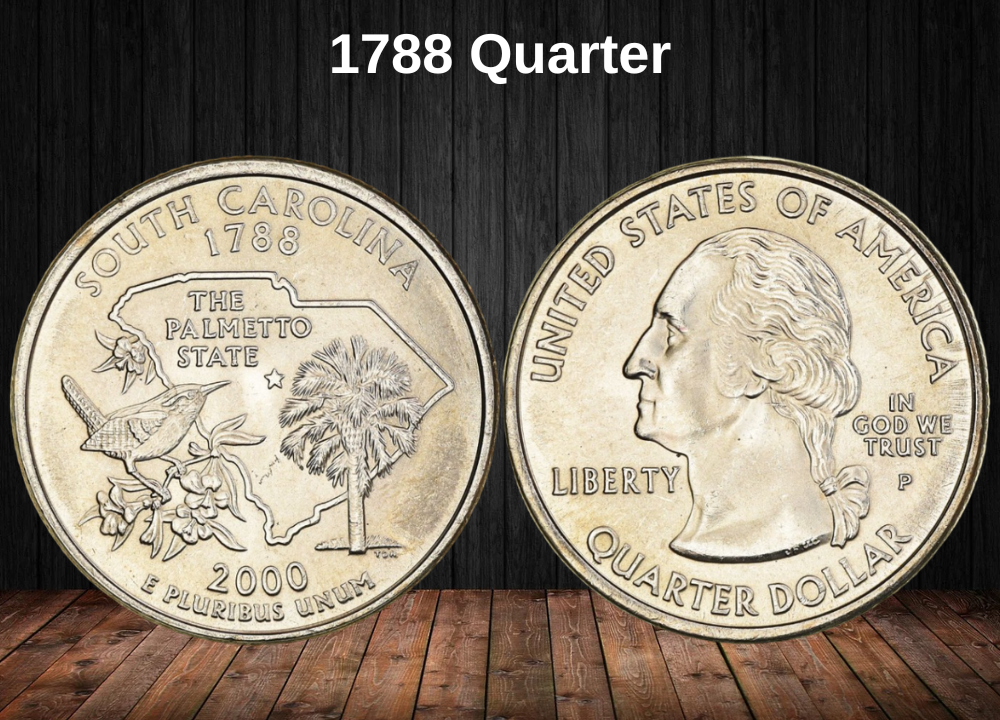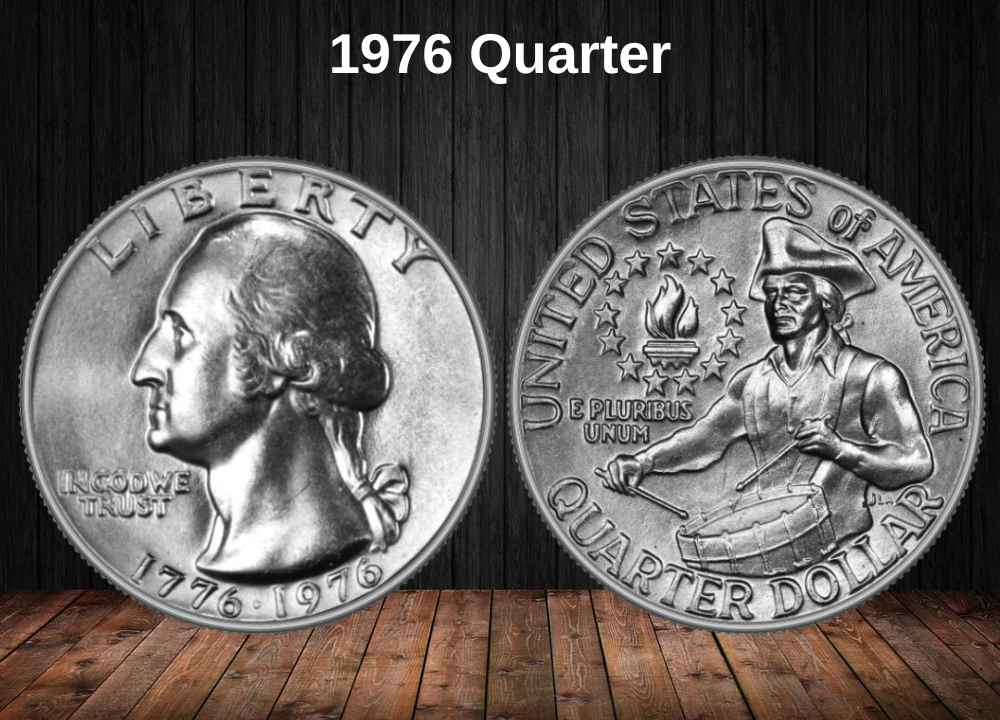What’s your 1943 quarter worth?
That depends on the mint mark, grade, and whether you’ve got one of the rare error varieties.
Here’s the reality: while a worn 1943 quarter will usually bring only a modest premium over face value thanks to its silver content, high-grade survivors and special varieties can be worth hundreds of dollars at auction.
Most circulated pieces trade between $6 and $8, but pristine mint-state coins—especially those from the San Francisco Mint—command much stronger prices in today’s collector market.
1943 Quarter Value By Variety
This table shows the current market ranges for 1943 quarters across all three mint facilities, from Good condition up to Mint State.
| Type | Good | Fine | About Uncirculated (AU) | Mint State (MS) | Proof (PR) |
|---|---|---|---|---|---|
| 1943 No Mint Mark (Philadelphia) | $6.00 | $6.00 | $7.50 | $30.33 | — |
| 1943-D (Denver) | $6.79 | $7.83 | $14.00 | $43.67 | — |
| 1943-S (San Francisco) | $6.79 | $7.33 | $11.50 | $54.67 | — |
History of the 1943 Quarter
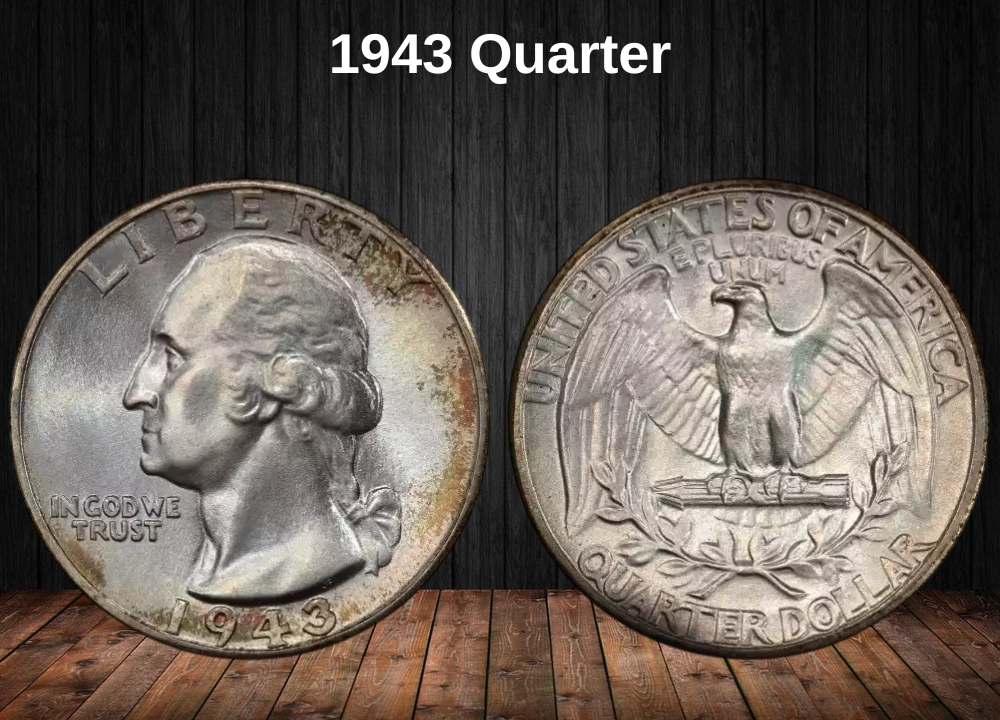
The 1943 quarter offers a unique window into America’s wartime era, struck in the middle of World War II when the nation’s economy and industry were fully mobilized for conflict.
By this point, the Washington quarter—first issued in 1932 to honor George Washington’s 200th birthday—had become firmly established as the standard U.S. 25-cent piece. John Flanagan’s design, with Washington’s portrait on the obverse and the heraldic eagle on the reverse, had already become one of the most recognizable images in American coinage.
In 1943, production was pushed to meet the demands of a wartime economy. The Philadelphia Mint (no mint mark) handled the bulk of production, while Denver (D) and San Francisco (S) contributed smaller but still significant mintages. Each of these mints produced quarters with the same 90% silver and 10% copper composition, giving the coins both spending power and intrinsic bullion value.
Unlike later wartime issues of other denominations (like the 1943 steel cent), the quarter’s silver content was never altered—meaning these coins retain the same precious metal appeal that collectors value today.
High-circulation use during WWII means that most surviving 1943 quarters are well-worn, but mint-state examples showcase the U.S. Mint’s craftsmanship even under wartime pressure. Their survival tells a story not just of numismatics, but of America’s resilience during one of its most defining decades.
Key Features of the 1943 Quarter
The 1943 quarter stands as a wartime continuation of the Washington quarter series, carrying John Flanagan’s classic design into one of America’s most difficult eras. By its tenth year of production, the Washington quarter had become firmly entrenched as the nation’s standard 25-cent coin, far removed from its 1932 beginnings as a bicentennial commemorative.
The Obverse of the 1943 Quarter
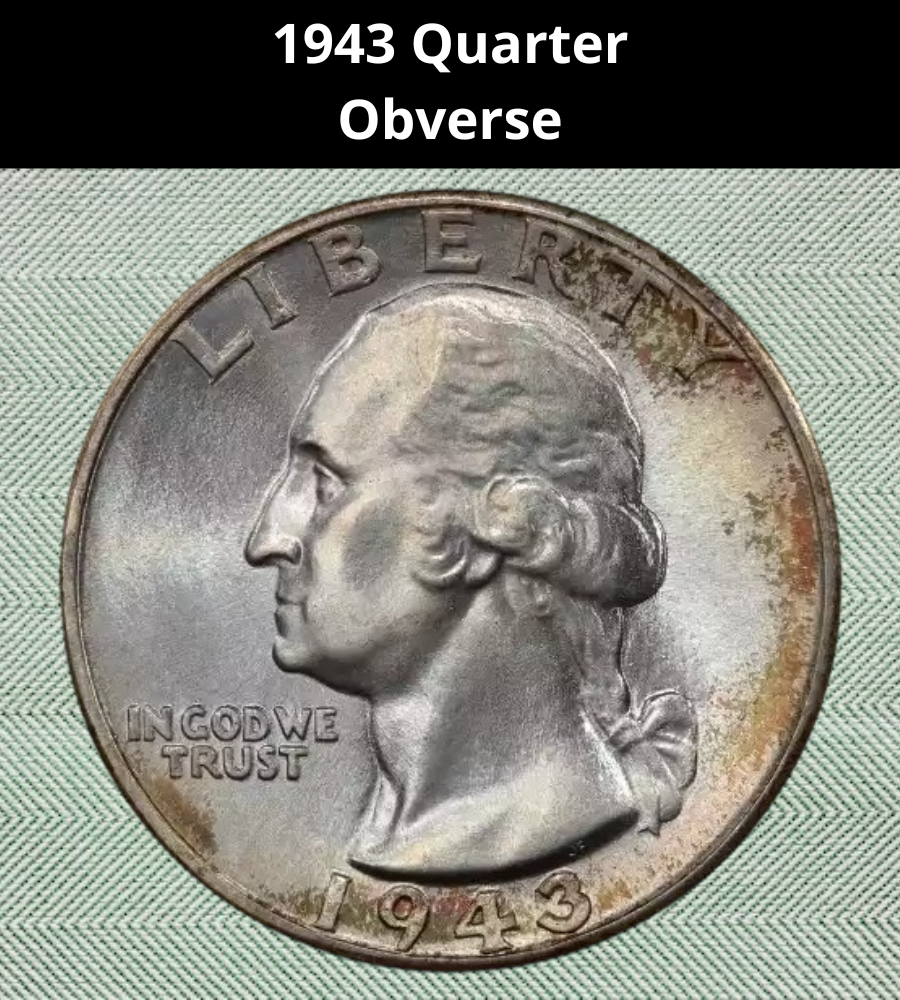
The obverse features George Washington’s left-facing profile, with LIBERTY curving along the top and IN GOD WE TRUST tucked to the left of his bust. The date 1943 anchors the design at the bottom, forever tying the coin to the pivotal wartime year when Americans on the home front were rationing, saving, and supporting the war effort in countless ways.
Flanagan’s initials JF remain subtly placed at the base of Washington’s neck truncation, a small but important detail for attribution.
The Reverse of the 1943 Quarter
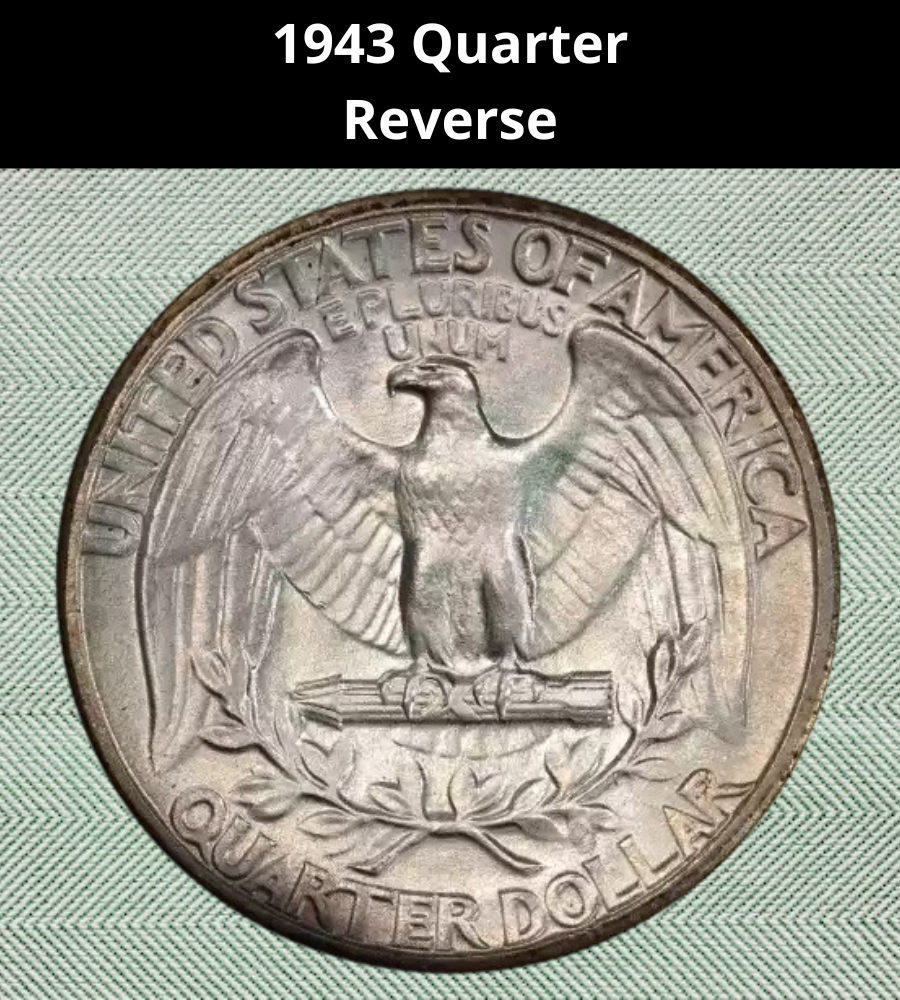
The reverse continues with Flanagan’s heraldic eagle—wings spread wide in strength—perched on a bundle of arrows that symbolize military readiness, while an olive branch beneath represents the enduring hope for peace.
- UNITED STATES OF AMERICA arcs across the top.
- E PLURIBUS UNUM sits just above the eagle’s head.
- QUARTER DOLLAR spans the lower rim.
- The mint mark (D for Denver, S for San Francisco, or blank for Philadelphia) appears just below the olive branch, identifying each coin’s origin.
Other Features of the 1943 Quarter
The technical specifications of the 1943 quarter followed tradition:
- Composition: 90% silver, 10% copper
- Weight: 6.25 grams (0.20094 troy ounces)
- Silver Content: 0.1808 troy ounces (5.62 g)
- Diameter: 24.3 mm
- Thickness: 1.75 mm
- Edge: Reeded with 119 grooves
These details gave the coin both practical use in everyday commerce and enduring bullion value—something modern clad quarters no longer provide.
1943 Quarter Grading
Grading a 1943 quarter can mean the difference between a coin worth only its silver melt value and one that commands four-figure auction prices. Careful attention to strike sharpness, luster, and wear patterns is essential.
| Grade | Description | Key Diagnostics |
|---|---|---|
| Good (G-4) | Heavily worn but identifiable. | Washington’s bust is flat with nearly all hair detail gone; eagle reduced to an outline with no feather detail visible. |
| Fine (F-12) | Moderate wear across major devices. | Some hair detail remains above Washington’s ear; eagle shows partial wing outlines but breast feathers are smooth. |
| Extremely Fine (EF-40) | Light, even wear on high points. | Hair strands above Washington’s ear still visible; cheek shows flattening; eagle retains most feather lines though breast shows wear. |
| About Uncirculated (AU-55) | Traces of wear on highest points only. | Strong luster still present; cheek and hair curls sharp with light friction; eagle’s wing and tail feathers mostly intact. |
| Mint State (MS-60 to MS-67+) | No wear, only bag/contact marks vary by grade. | Brilliant luster across the fields; sharp cheek and hair curls; eagle’s breast feathers crisp. Higher MS coins show satiny or rainbow toning and virtually mark-free cheeks. |
1943 Quarter Value Guides
1943 No Mint Mark Quarter Value
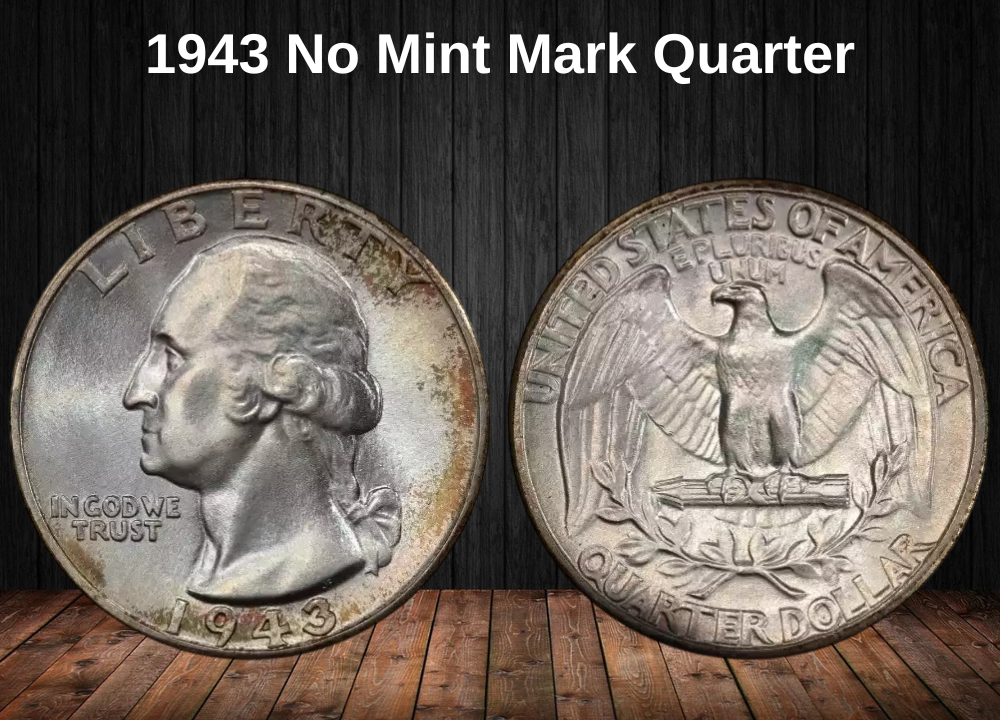
The 1943 Philadelphia quarter is the workhorse of America’s wartime coinage, with nearly 100 million struck—the highest of the three mints that year. Despite this massive output, it illustrates a key lesson in numismatics: mintage alone doesn’t determine value.
In circulated grades, these coins remain affordable at around $6–7, reflecting their wide availability. But in higher grades, rarity re-emerges. Pristine Mint State (MS) examples, especially those graded MS-67 and above, can command hundreds of dollars, with auction records pushing into the $500+ range.
Collectors look for coins with strong luster, sharp strikes, and minimal contact marks. The absence of a mint mark beneath the eagle confirms Philadelphia origin.
1943 No Mint Mark Quarter Price/Grade Chart
(Latest Auction Records Included)
| Grade | Price Range | Recent Auction Results |
|---|---|---|
| Good (G-4) | $6 – $7 | Market average |
| Fine (F-12) | $7 – $8 | Consistent trades |
| About Uncirculated (AU-50) | $11 – $15 | HA 2024 – $12 |
| Mint State (MS-63) | $30 – $40 | SB 2024 – $36 |
| Mint State (MS-65) | $120 – $200 | HA 2023 – $159 |
| Mint State (MS-67) | $350 – $535+ | HA 2024 – $535 |
1943-D Quarter Value
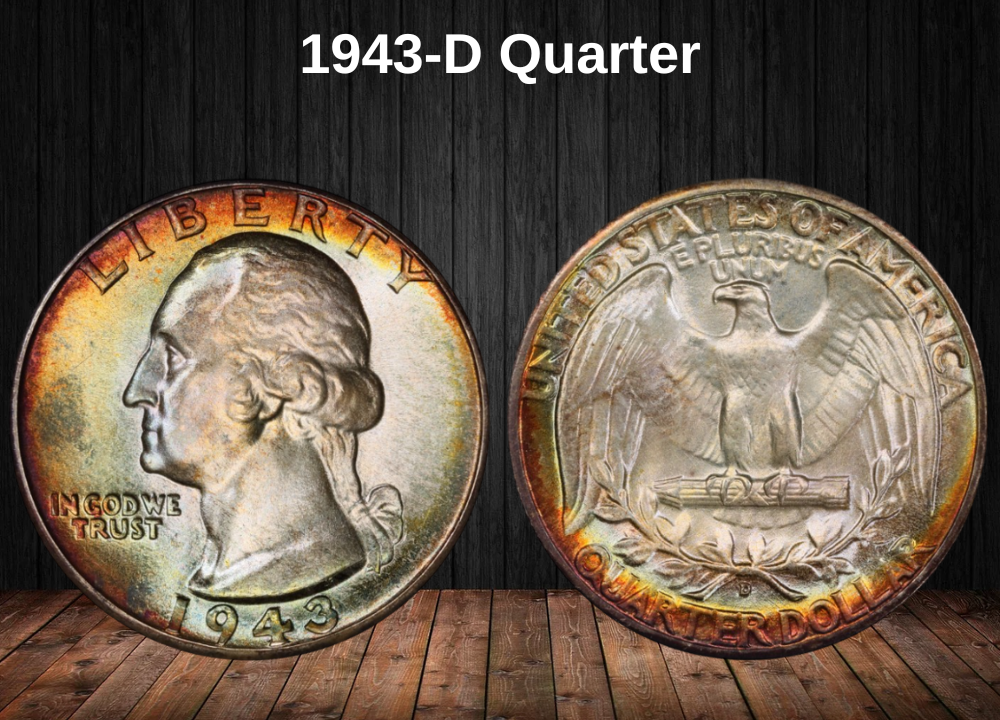
The 1943-D Washington quarter represents Denver’s wartime contribution to the series, with a mintage of 16 million coins. This places it firmly between Philadelphia’s massive production and San Francisco’s smaller run, earning it the reputation as the “balanced” issue of 1943.
Despite being a middle mintage, the 1943-D actually ranks higher in rarity than the Philadelphia issue—coming in at #68 in Washington quarter scarcity rankings. That small “D” mint mark beneath the eagle makes all the difference, giving this coin added collector appeal.
In circulated grades, values range from $8–10, but the real excitement happens at the top end of the scale. Mint State examples (MS-65 and above) are notably scarce, and coins graded MS-68 have brought prices exceeding $2,000 at auction.
1943-D Quarter Price/Grade Chart
(Latest Auction Records Included)
| Grade | Price Range | Recent Auction Results |
|---|---|---|
| Good (G-4) | $6 – $8 | Market average |
| Fine (F-12) | $7 – $9 | Consistent trades |
| About Uncirculated (AU-50) | $15 – $25 | HA 2024 – $18 |
| Mint State (MS-63) | $45 – $70 | SB 2023 – $65 |
| Mint State (MS-65) | $150 – $250 | HA 2023 – $204 |
| Mint State (MS-67) | $700 – $1,100 | SB 2025 – $145; HA 2023 – $360 |
| Mint State (MS-68) | $1,500 – $2,100+ | HA 2024 – $2,040; HA 2022 – $1,800 |
1943-S Quarter Value
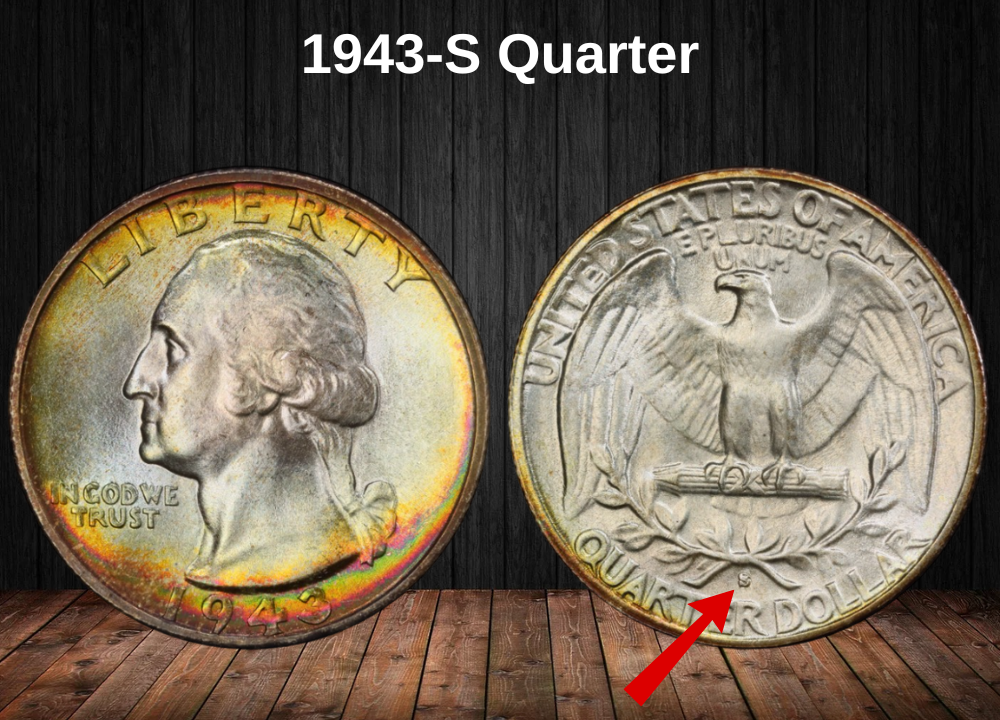
The 1943-S Washington quarter is the wild card of the wartime trio. With a mintage of 21.7 million coins, it technically lands between Denver and Philadelphia in terms of numbers—but in the marketplace, it often outshines them both.
Ranked only #81 in Washington quarter rarity, logic might suggest it should be the least valuable of the three 1943 issues. Yet collector demand consistently elevates its value, proving that numismatic popularity often trumps mintage statistics.
The appeal lies in the San Francisco Mint’s distinctive production quality. While these coins sometimes show slightly weaker strikes than their Denver counterparts, they carry a charm and scarcity in higher Mint State grades that fuels intense bidding. At the top end, MS-67 and MS-68 specimens have commanded four- and even five-figure auction prices.
1943-S Quarter Price/Grade Chart
(Latest Auction Records Included)
| Grade | Price Range | Recent Auction Results |
|---|---|---|
| Good (G-4) | $6 – $8 | Market average |
| Fine (F-12) | $7 – $9 | Consistent trades |
| About Uncirculated (AU-50) | $20 – $30 | HA 2023 – $25 |
| Mint State (MS-63) | $40 – $80 | SB 2023 – $77 |
| Mint State (MS-65) | $120 – $200 | HA 2024 – $125 |
| Mint State (MS-67) | $400 – $700 | HA 2023 – $432; HA 2023 – $330 |
| Mint State (MS-68) | $5,000 – $13,200+ | SB 2025 – $13,200; HA 2023 – $312 |
Rare 1943 Quarter Error List
1. 1943 Doubled Die Obverse (FS-101, FS-102, FS-103)
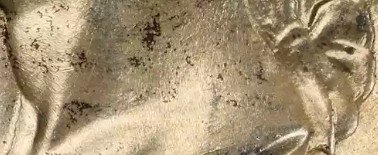
The 1943 Doubled Die Obverse (DDO) varieties are some of the most sought-after Washington quarter errors, created when dies received multiple misaligned impressions during hubbing. Each subtype carries its own distinct diagnostics and collector appeal.
- FS-101 → The most dramatic of the group, with bold doubling on “LIBERTY” and the date “1943”. Clear separation lines make this the most recognizable and valuable of the three.
- FS-102 → Shows strong doubling on “IN GOD WE TRUST”, with secondary impressions northeast of the primary motto letters.
- FS-103 → A more subtle variety, featuring date thickening and slight doubling, often accompanied by sharper-than-average luster that makes it appealing to specialists.
Despite differences in severity, all three varieties demonstrate the flaws in wartime die production when speed often outweighed precision.
1943 Doubled Die Obverse (FS-101 to FS-103) Price/Grade Chart
(Latest Auction Records Included)
| Grade | FS-101 Value | FS-102 Value | FS-103 Value |
|---|---|---|---|
| Fine (F-12) | $50 – $75 | $35 – $55 | $25 – $40 |
| About Uncirculated (AU-50) | $180 – $260 | $120 – $180 | $85 – $140 |
| Mint State (MS-63) | $400 – $650 | $250 – $400 | $175 – $300 |
| Mint State (MS-65) | $900 – $1,400 | $600 – $900 | $450 – $700 |
| Mint State (MS-67) | $2,000+ | $1,200+ | $850+ |
2. 1943-D Doubled Die Obverse (FS-101)

The 1943-D Doubled Die Obverse (FS-101) is one of the standout Denver mint varieties of the Washington quarter series. This error shows strong doubling on “LIBERTY” and Washington’s profile, with the secondary impression appearing slightly northwest of the primary design.
Uniquely, even the “D” mint mark often shows traces of doubling, confirming this as a true doubled die rather than a simple repunched mintmark. Collectors prize this error for its clarity and branch-mint status, which always adds extra appeal.
Because the doubling occurred early in the die’s lifecycle, strike quality is usually excellent. Most examples feature crisp detail and visible doubling, making authentication relatively straightforward compared to subtler errors.
1943-D Doubled Die Obverse (FS-101) Price/Grade Chart
(Latest Auction Records Included)
| Grade | Value Range | Recent Auction Results |
|---|---|---|
| Fine (F-12) | $75 – $120 | Market trades |
| About Uncirculated (AU-50) | $250 – $400 | HA 2023 – $312 |
| Mint State (MS-63) | $600 – $850 | SB 2024 – $780 |
| Mint State (MS-65) | $1,000 – $1,600 | HA 2024 – $1,320 |
| Mint State (MS-67) | $2,500 – $4,000+ | HA 2024 – $3,120 |
3. 1943-S Medium S (FS-502)

The 1943-S Medium S FS-502 is a fascinating San Francisco variety distinguished by its medium-sized “S” mintmark, measuring around 1.5 mm with noticeably thicker serif strokes than the standard punch.
This variety is particularly interesting to specialists because it reflects the era’s hand-punched mintmark process, where different punches created visible variations in size and shape. The FS-502 examples generally come from early die states, which means sharper detail across Washington’s profile and especially the eagle’s feathering on the reverse.
Collectors also note that these pieces often show unique luster patterns, with slightly more reflective fields and frosted devices—creating almost a cameo-like effect rarely seen on circulation strikes. This subtle difference makes them especially attractive for die-variety hunters.
1943-S Medium S FS-502 Quarter Price/Grade Chart
(Latest Auction Records Included)
| Grade | Value Range | Recent Auction Results |
|---|---|---|
| Fine (F-12) | $15 – $25 | Market trades |
| About Uncirculated (AU-50) | $45 – $75 | SB 2023 – $60 |
| Mint State (MS-63) | $120 – $220 | HA 2024 – $192 |
| Mint State (MS-65) | $350 – $600 | SB 2024 – $528 |
| Mint State (MS-67) | $1,000 – $1,800 | HA 2024 – $1,560 |
4. 1943-S/S RPM (FS-503, FS-504)
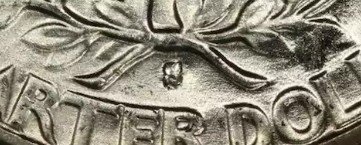
The 1943-S/S Repunched Mint Mark varieties (FS-503 and FS-504) represent classic examples of San Francisco’s hand-punched mintmark process. Both varieties display distinct secondary impressions of the “S” mintmark, creating a clear shadow effect that collectors can easily identify with magnification.
- FS-503 — Shows a northwest repunch, with the underlying “S” clearly visible above and slightly offset from the final strike.
- FS-504 — Displays a southeast shift, producing a shadowed doubling effect below the primary mintmark.
These varieties are not just curiosities but also windows into 1940s minting practices, when technicians manually corrected mintmark placement. Because both were struck from early die states, coins often retain excellent strike sharpness and strong surface quality, making them particularly appealing in higher grades.
1943-S/S RPM (FS-503, FS-504) Quarter Price/Grade Chart
(Latest Auction Records Included)
| Grade | Value Range | Recent Auction Results |
|---|---|---|
| Fine (F-12) | $20 – $30 | Market trades |
| About Uncirculated (AU-50) | $60 – $85 | SB 2023 – $72 |
| Mint State (MS-63) | $150 – $250 | HA 2024 – $192 |
| Mint State (MS-65) | $300 – $650 | SB 2024 – $528 |
| Mint State (MS-67) | $1,200 – $2,000 | HA 2024 – $1,680 |
5. 1943-S “Goiter” FS-401
The 1943-S “Goiter” FS-401 is one of the most visually distinctive Washington quarter varieties, instantly recognizable to error specialists. The nickname comes from a die break (cud) that appears as a raised bulge on Washington’s neck, resembling a medical goiter.
This anomaly formed as the die developed a progressive break:
- Early die states — A small raised lump appears with minimal distortion.
- Mid to late states — The break expands into a larger “goiter” effect, becoming more dramatic and eye-catching.
Because die breaks worsen with continued use, coins struck later often show weaker strike quality, while earlier strikes exhibit superior luster, sharper details, and better overall eye appeal.
1943-S “Goiter” FS-401 Quarter Price/Grade Chart
(Latest Auction Records Included)
| Grade | Value Range | Recent Auction Results |
|---|---|---|
| Fine (F-12) | $25 – $40 | Market trades |
| About Uncirculated (AU-50) | $85 – $140 | SB 2023 – $120 |
| Mint State (MS-63) | $250 – $400 | HA 2024 – $312 |
| Mint State (MS-65) | $600 – $1,200 | SB 2024 – $960 |
| Mint State (MS-67) | $2,000 – $3,500 | HA 2024 – $2,880 |
6. 1943-S Trumpet Tail S FS-501
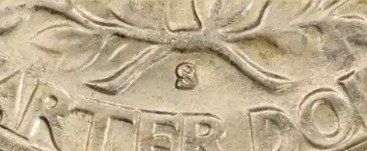
The 1943-S Trumpet Tail S FS-501 is a standout variety recognized by its unique mint mark punch, where the bottom serif of the “S” flares outward like a trumpet bell. The mint mark measures approximately 1.6mm in height, making it slightly larger and bolder than the standard “S” punches.
This distinctive style of mint mark created better metal flow during striking, often producing coins with sharper details, excellent surface luster, and stronger visual appeal. Another diagnostic feature is its slightly lower positioning, which creates tighter spacing with the “QUARTER DOLLAR” inscription on the reverse, helping specialists identify the variety quickly.
1943-S Trumpet Tail S FS-501 Quarter Price/Grade Chart
(Latest Auction Records Included)
| Grade | Value Range | Recent Auction Results |
|---|---|---|
| Fine (F-12) | $20 – $35 | Market trades |
| About Uncirculated (AU-50) | $65 – $120 | SB 2023 – $96 |
| Mint State (MS-63) | $180 – $300 | HA 2024 – $228 |
| Mint State (MS-65) | $400 – $900 | SB 2024 – $660 |
| Mint State (MS-67) | $1,500 – $2,800 | HA 2024 – $2,160 |
7. 1943-S Doubled Die Obverse (DDO)

The 1943-S Doubled Die Obverse (DDO) is one of the standout error varieties from the San Francisco Mint. It displays clear separation and shadowing on major design elements, especially on the word LIBERTY and Washington’s facial profile details.
The doubling is most noticeable under magnification, where secondary impressions appear around the letters and portrait edges. This effect was caused during the die hubbing process, when the working die received slightly misaligned impressions from the master hub.
Because this variety was struck early in the die’s life, many examples exhibit excellent strike quality and strong luster, making them highly appealing to error specialists and Washington quarter collectors alike.
1943-S Doubled Die Obverse Quarter Price/Grade Chart
(Latest Auction Records Included)
| Grade | Value Range | Recent Auction Results |
|---|---|---|
| Fine (F-12) | $35 – $50 | Market trades |
| About Uncirculated (AU-50) | $120 – $250 | SB 2023 – $168 |
| Mint State (MS-63) | $400 – $750 | HA 2024 – $552 |
| Mint State (MS-65) | $1,000 – $2,000 | SB 2024 – $1,440 |
| Mint State (MS-67) | $3,000 – $6,000 | HA 2025 – $4,920 |
8. 1943-S DDO FS-101
The 1943-S Doubled Die Obverse FS-101 is the most recognized and cataloged doubled die variety from San Francisco in 1943. Unlike general DDO types, the FS-101 designation specifically identifies this dramatic misalignment during die hubbing, making it an essential entry in specialized error references.
The doubling is most dramatic on LIBERTY and the date “1943”, where secondary impressions create clear separation visible even without magnification. Collectors also note doubling in parts of Washington’s hair details, adding to the diagnostic markers that make authentication straightforward.
Because this doubled die occurred in the early die state, surviving examples often display excellent strike quality and superior luster, which enhances both visibility of the error and market desirability.
1943-S DDO FS-101 Quarter Price/Grade Chart
(Latest Auction Records Included)
| Grade | Value Range | Recent Auction Results |
|---|---|---|
| Fine (F-12) | $40 – $75 | Market trades |
| About Uncirculated (AU-50) | $150 – $300 | SB 2023 – $216 |
| Mint State (MS-63) | $600 – $1,200 | HA 2024 – $960 |
| Mint State (MS-65) | $1,800 – $3,000 | SB 2024 – $2,160 |
| Mint State (MS-67) | $4,000 – $7,500 | HA 2025 – $6,480 |
Where to Sell Your Quarter Coin?
Now that you know the value of your quarter, the next step is deciding where to sell it. There are several trusted options—both online and in person—that can help you get the best price depending on your coin’s rarity and condition.
To see the full list of recommended places, along with their advantages and disadvantages, check our complete guide on where to sell your quarter coins.
FAQ About the 1943 Washington Quarter
1. Why is the 1943 Quarter historically significant?
The 1943 Washington Quarter was minted at the height of World War II. Struck in 90% silver, it not only served as everyday currency but also as part of the U.S. wartime economy, where silver coinage remained essential despite metal shortages in other denominations.
2. Which mints produced the 1943 Quarter?
The coin was struck at Philadelphia (no mint mark), Denver (“D”), and San Francisco (“S”). The Philadelphia issue had the largest mintage, while the 1943-S tends to be scarcer in higher Mint State grades.
3. Are there any notable varieties or errors for the 1943 Quarter?
Yes. Collectors prize doubled die obverses (DDOs) and repunched mintmarks (RPMs) from Denver and San Francisco. Off-center strikes and clipped planchets are also seen for this year, adding extra collectible value.
4. How much is a 1943 Quarter worth?
Circulated examples usually sell for $5–$15, slightly above silver melt value. Mint State (MS65) coins can range from $100–$250, while superb gems (MS67+) can exceed $1,000. Rare varieties like DDOs or RPMs may bring several thousand dollars at auction.
5. What should collectors look for in a 1943 Quarter?
Focus on the sharpness of Washington’s hair and the eagle’s breast feathers—weak strikes lower value significantly. For error hunters, magnification helps spot RPMs or doubling. Original luster, natural toning, and PCGS/NGC certification greatly enhance desirability and market price.

